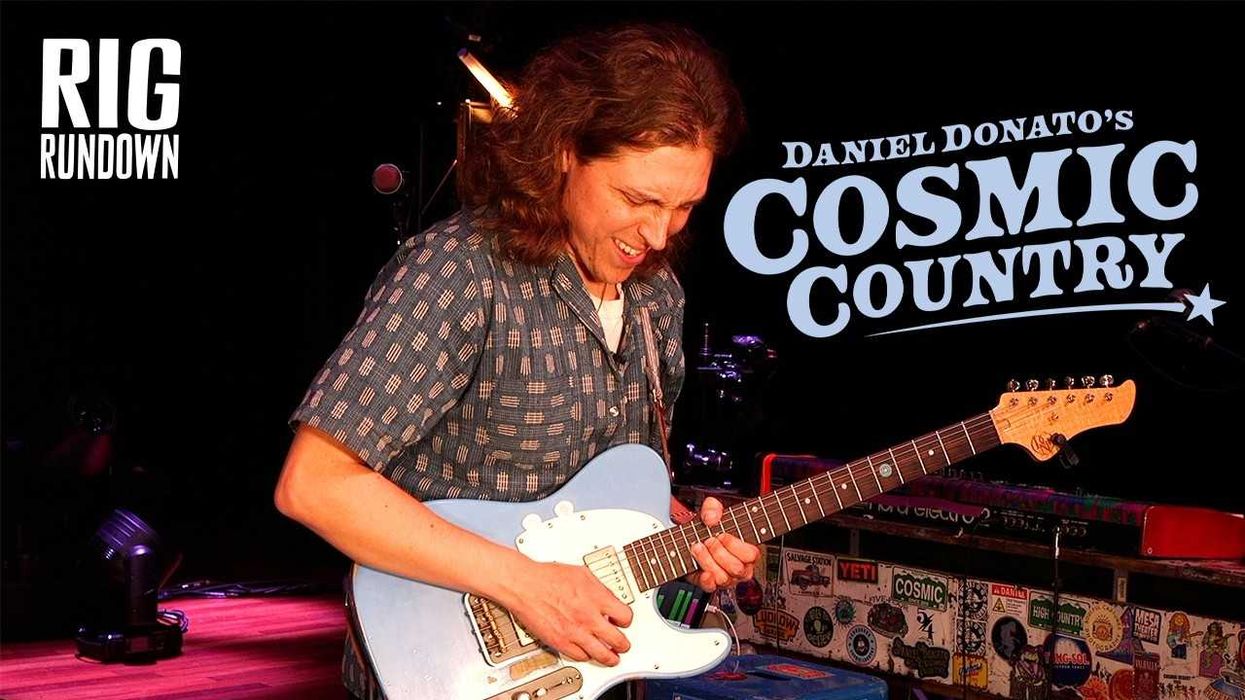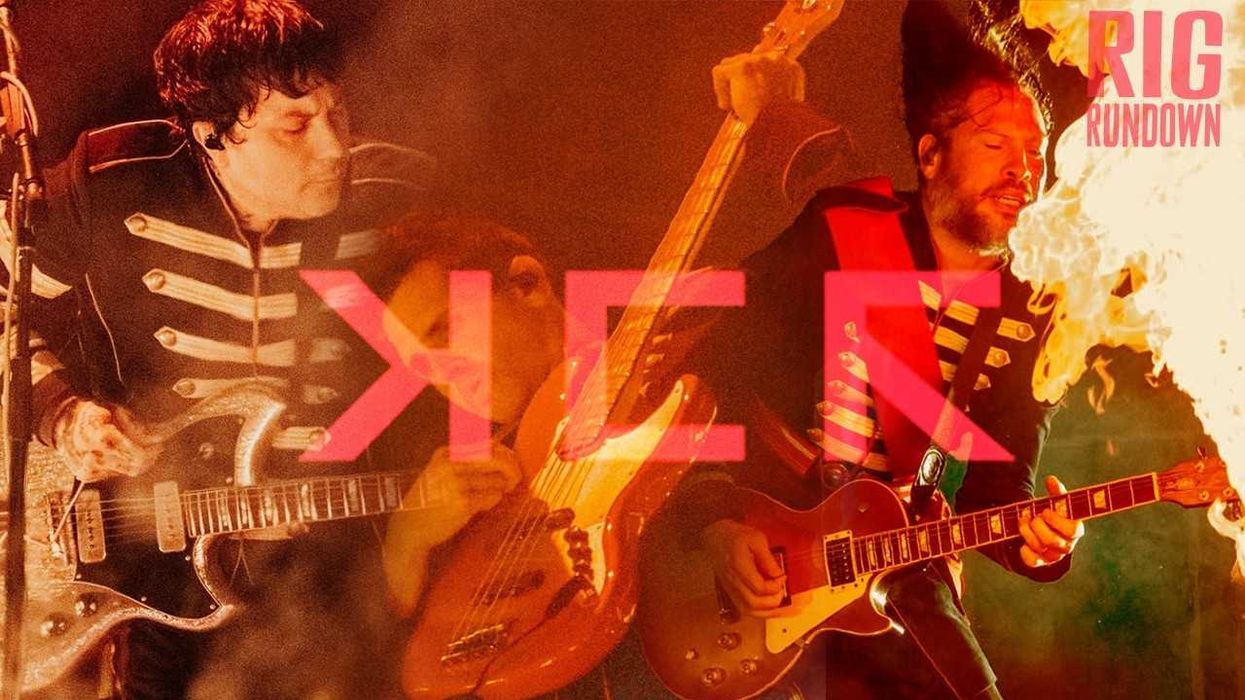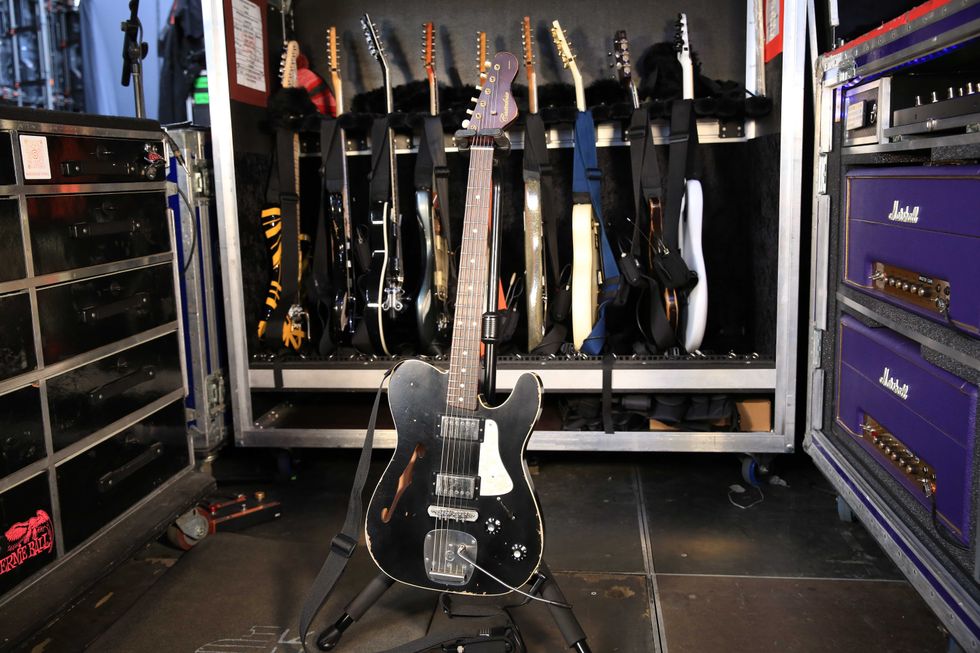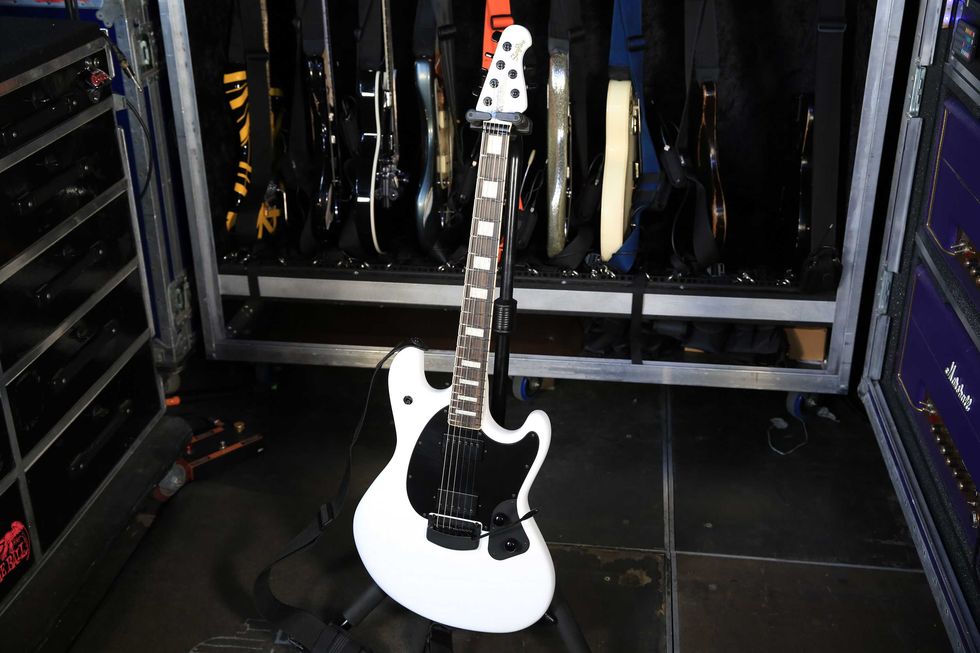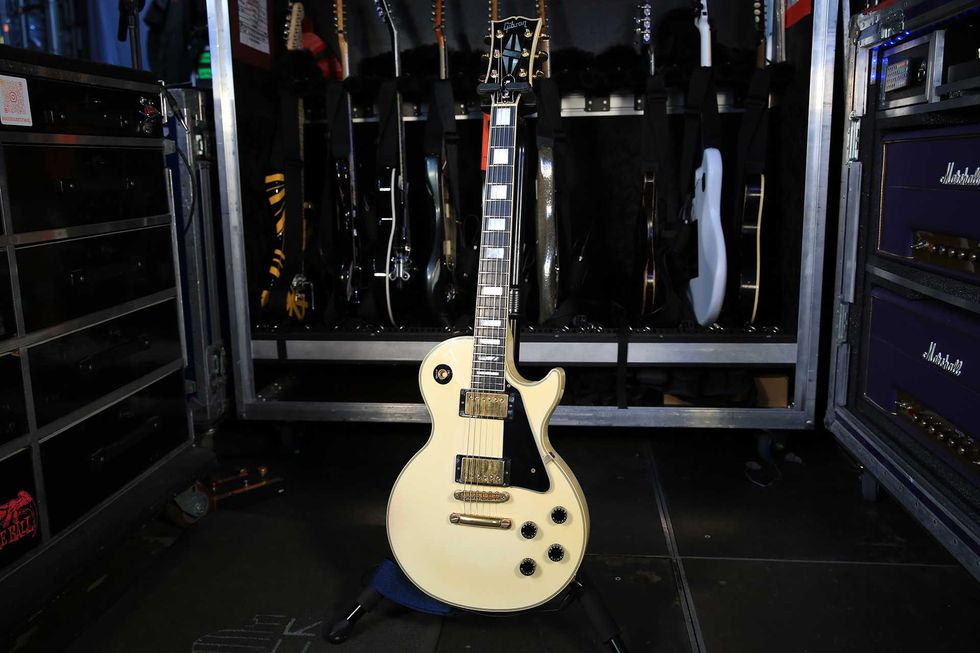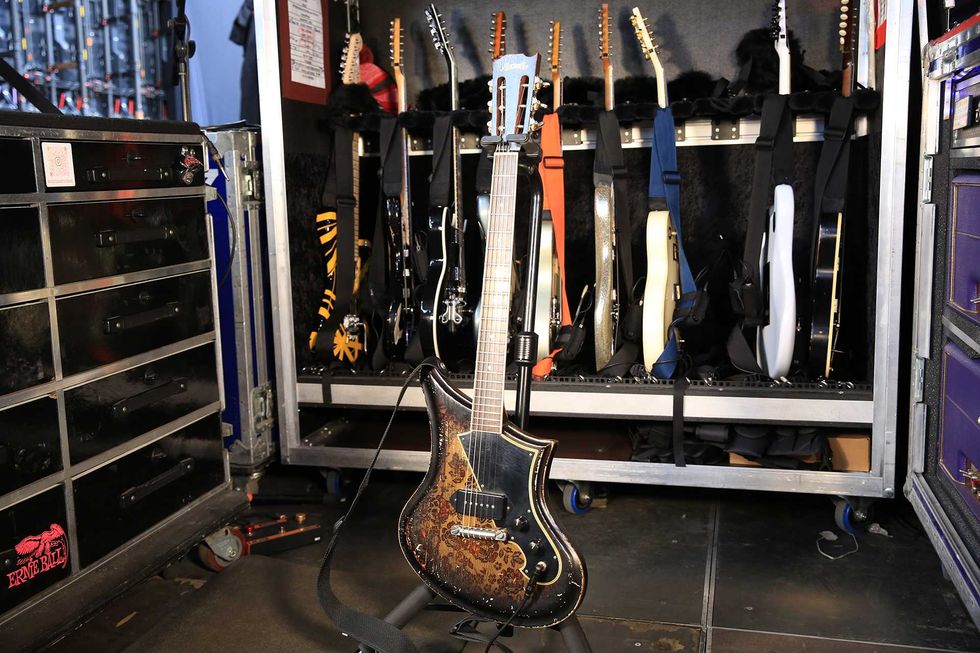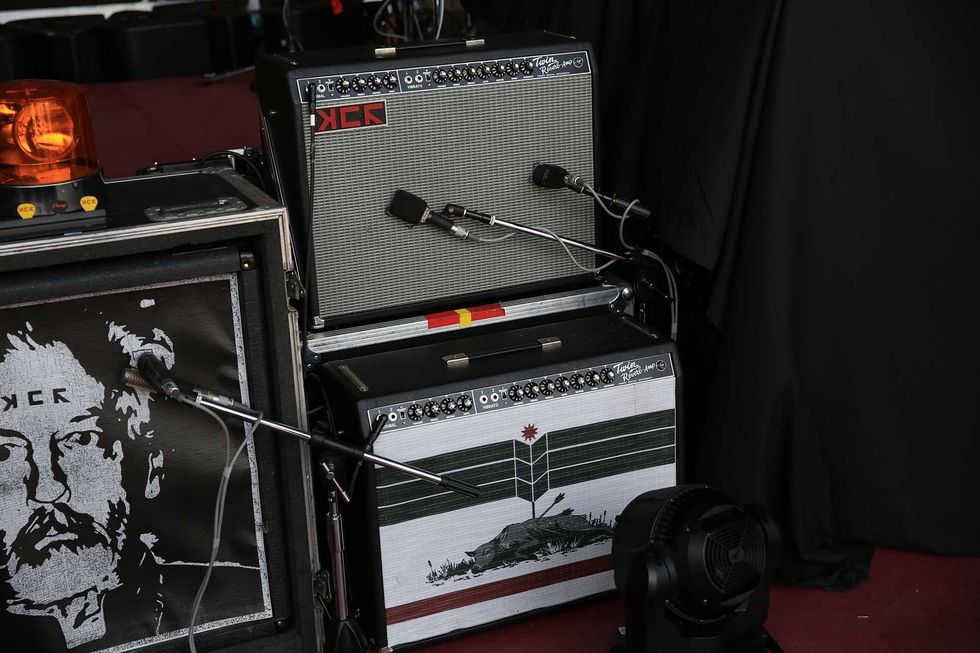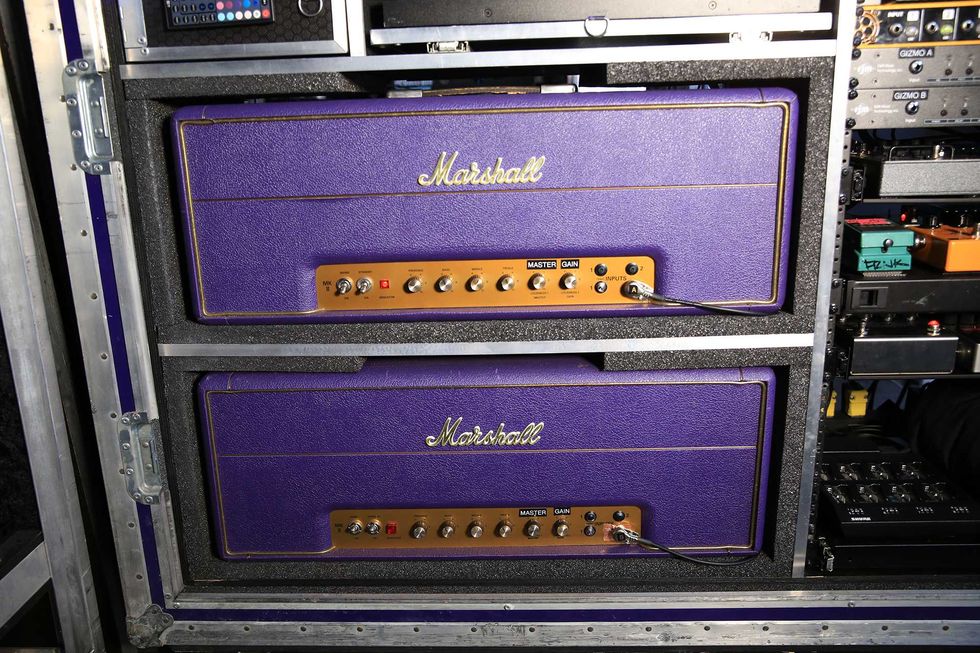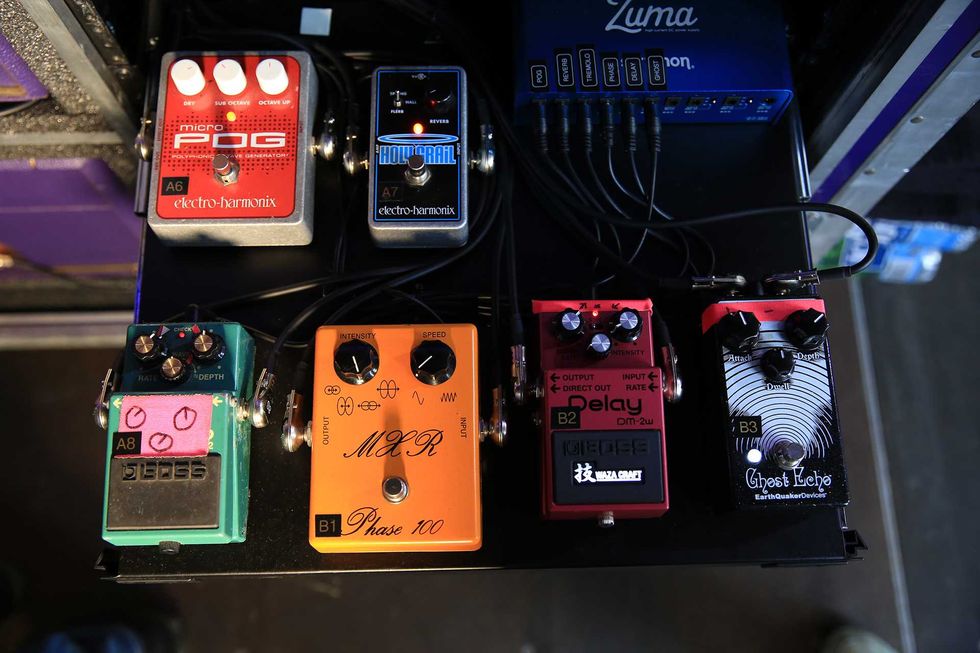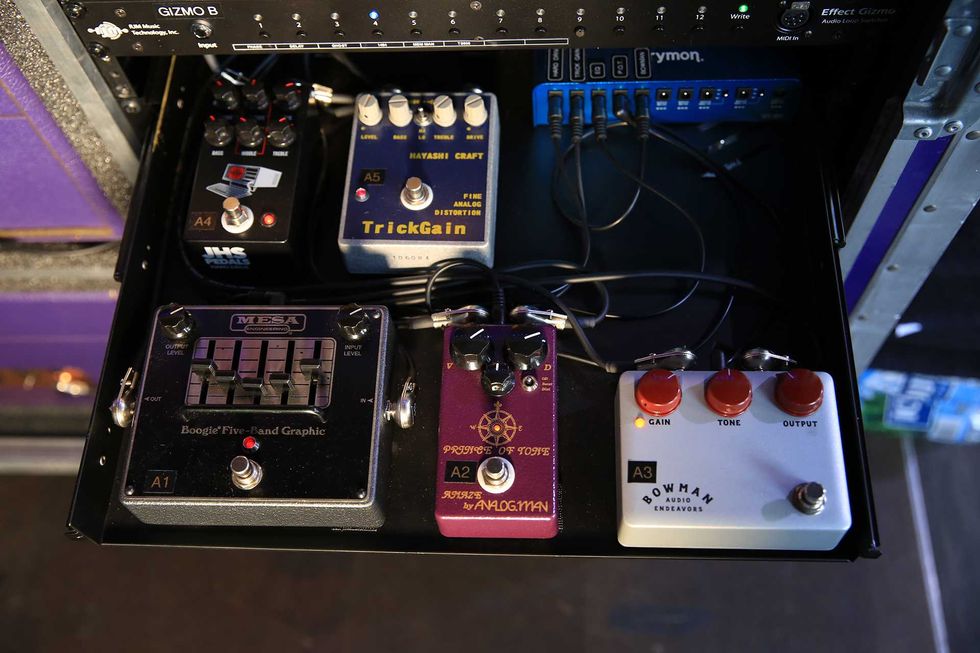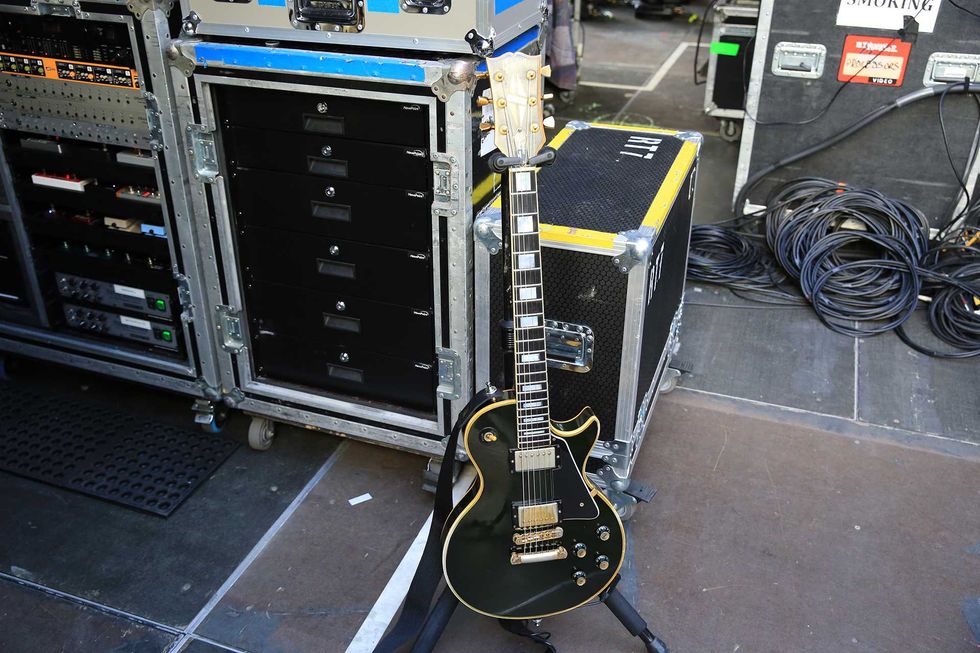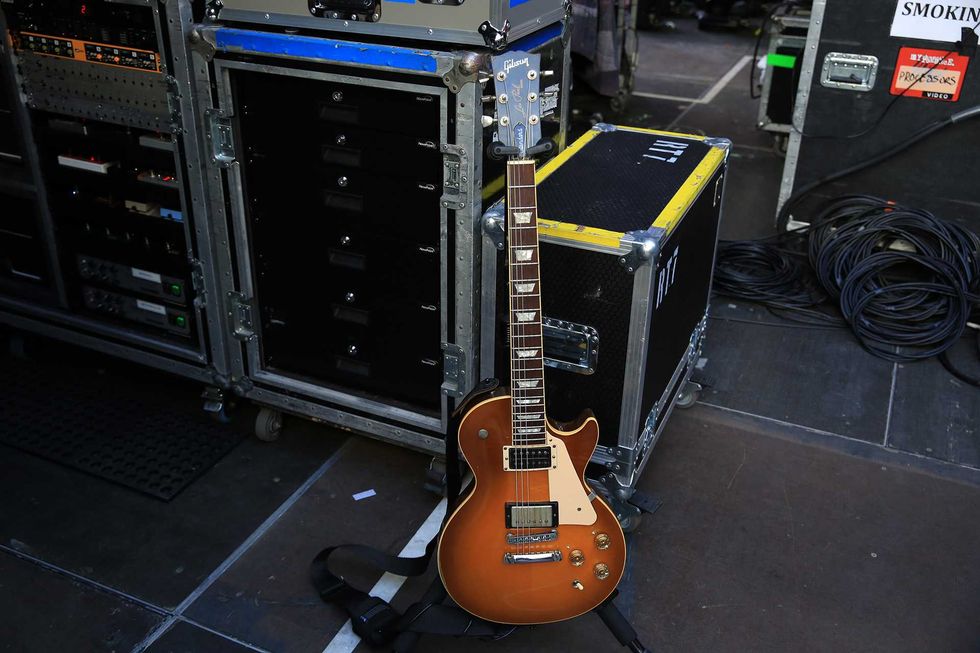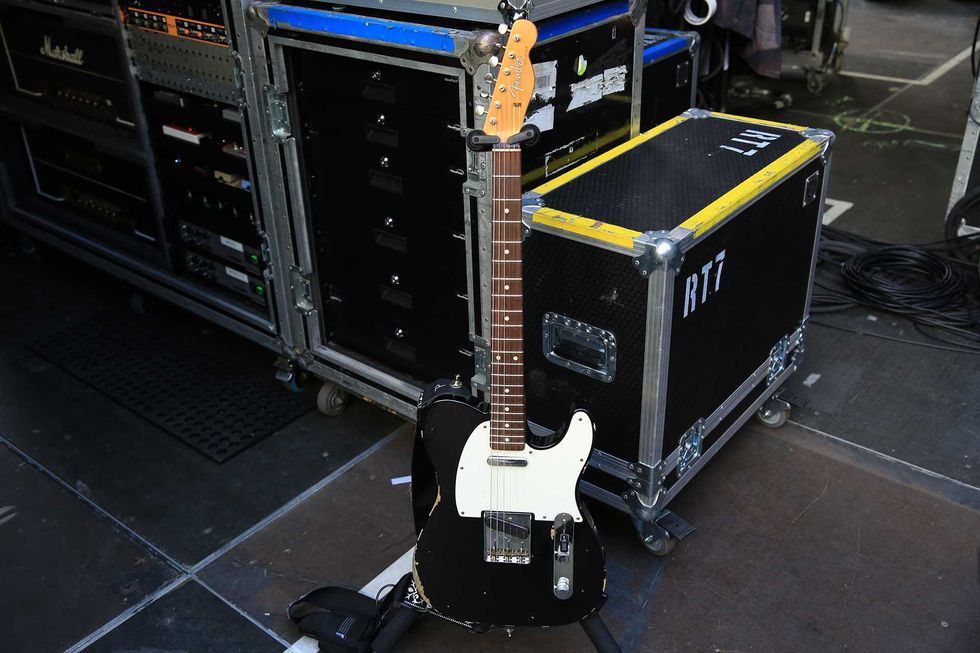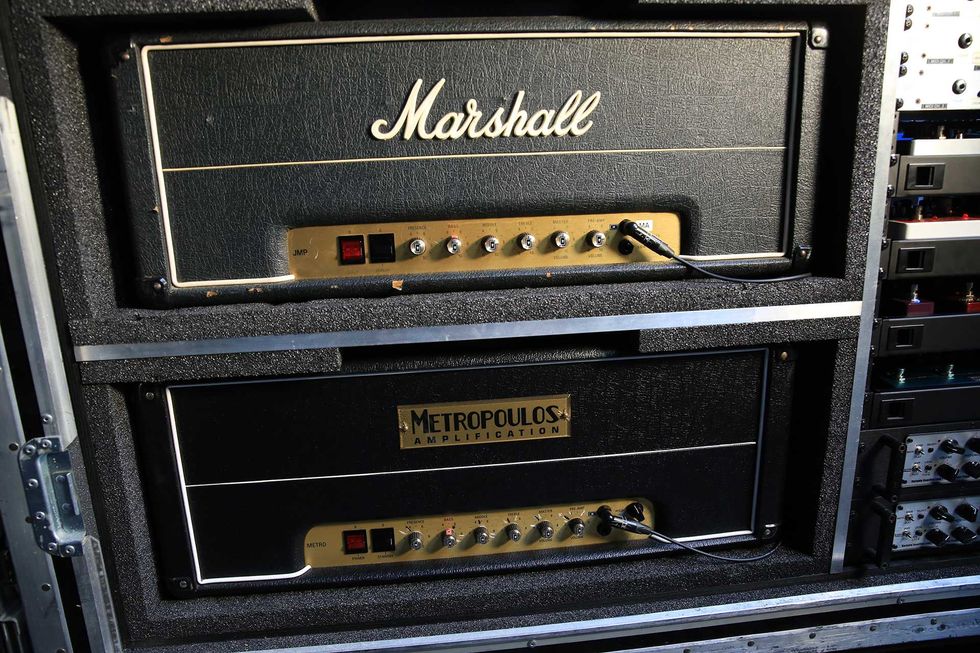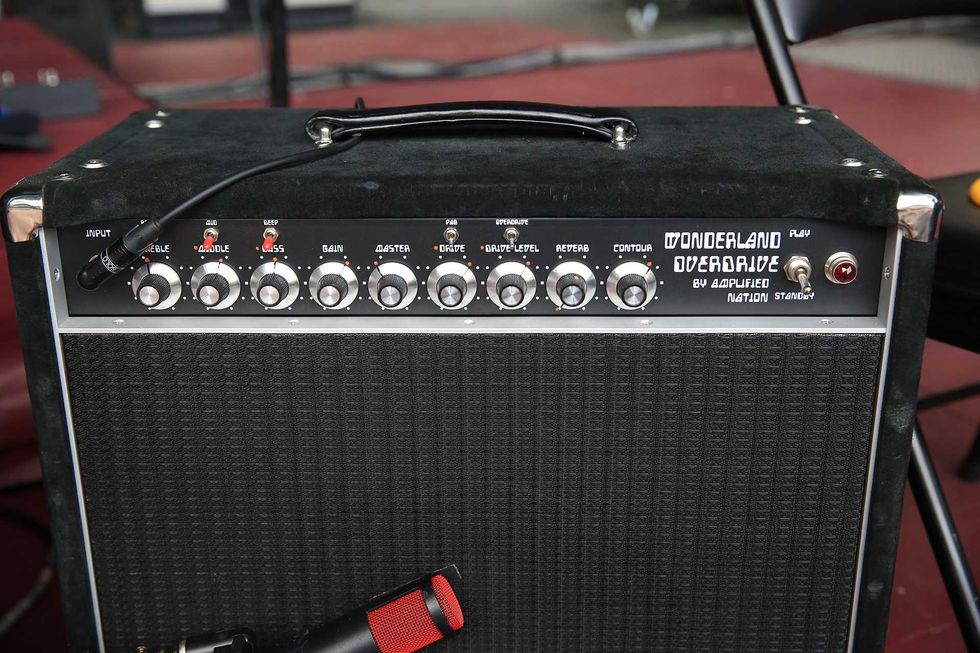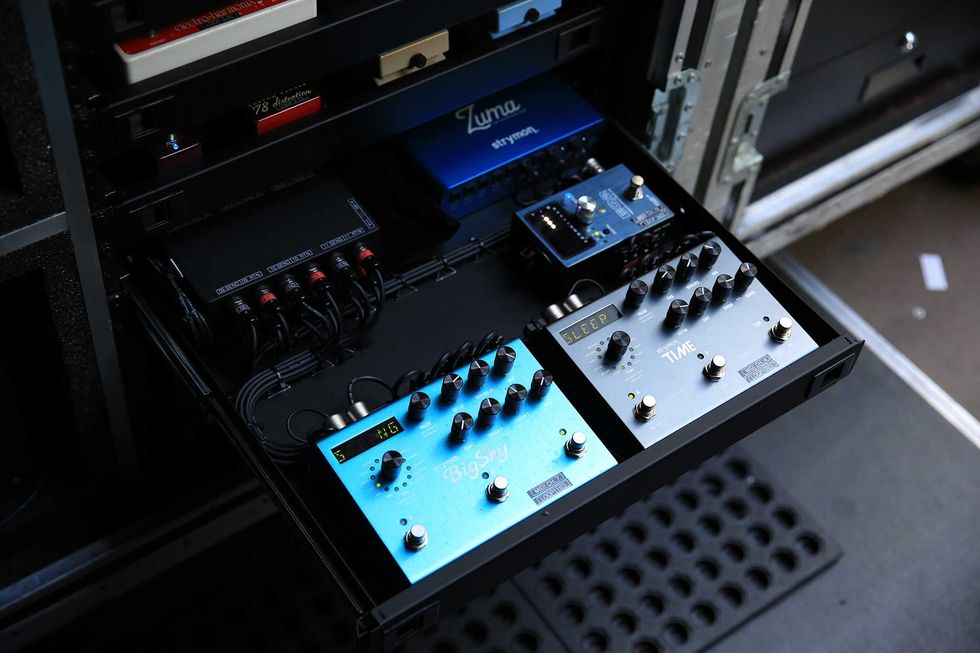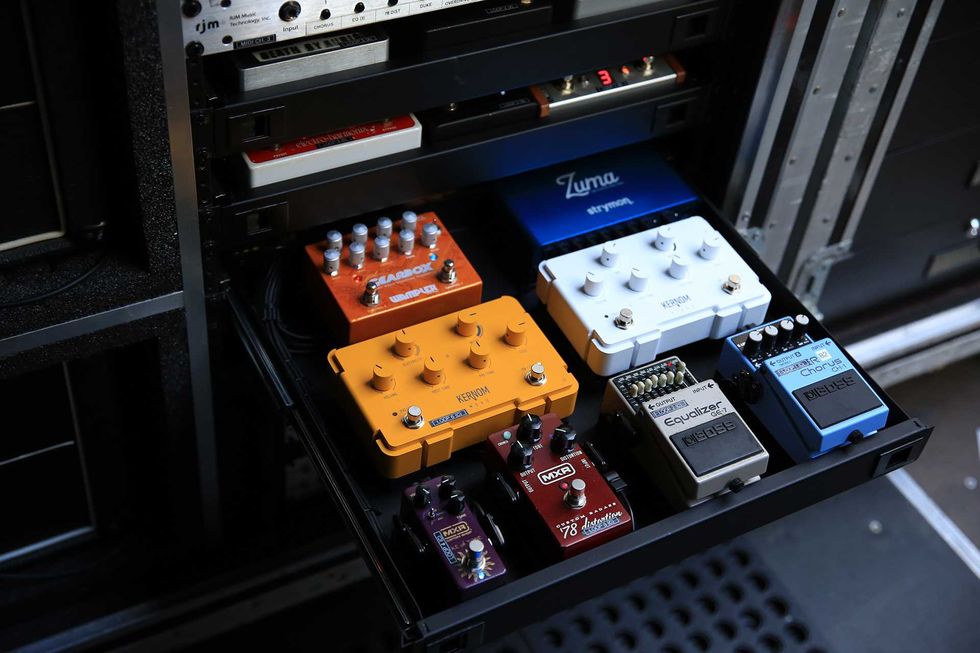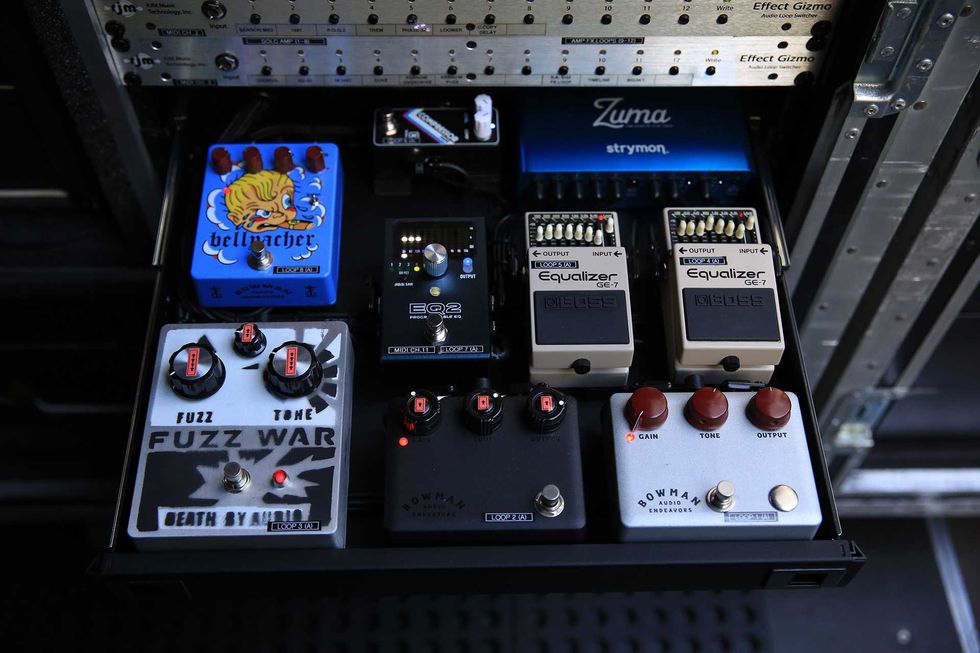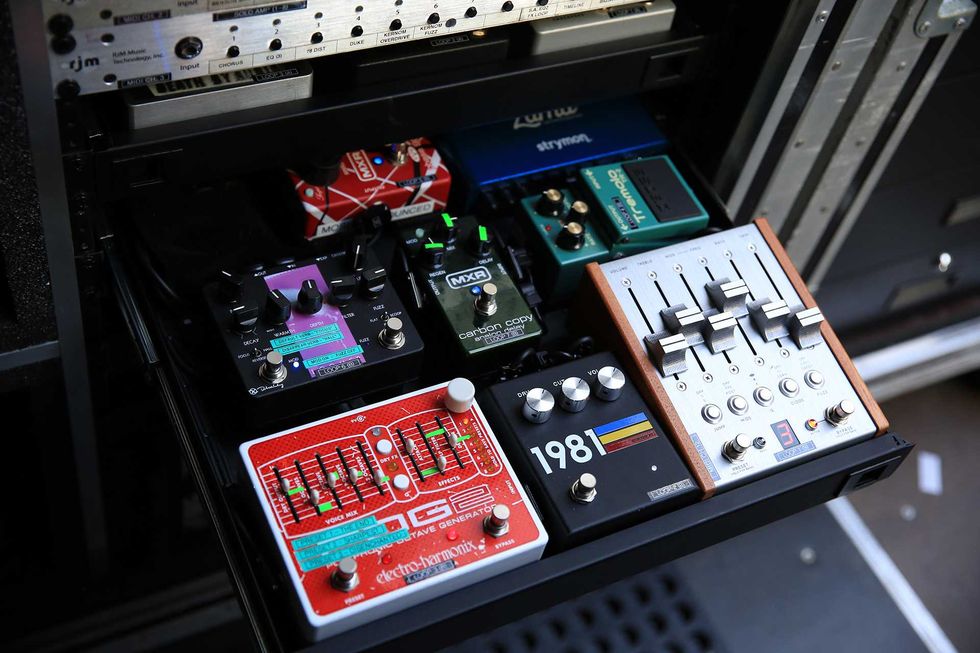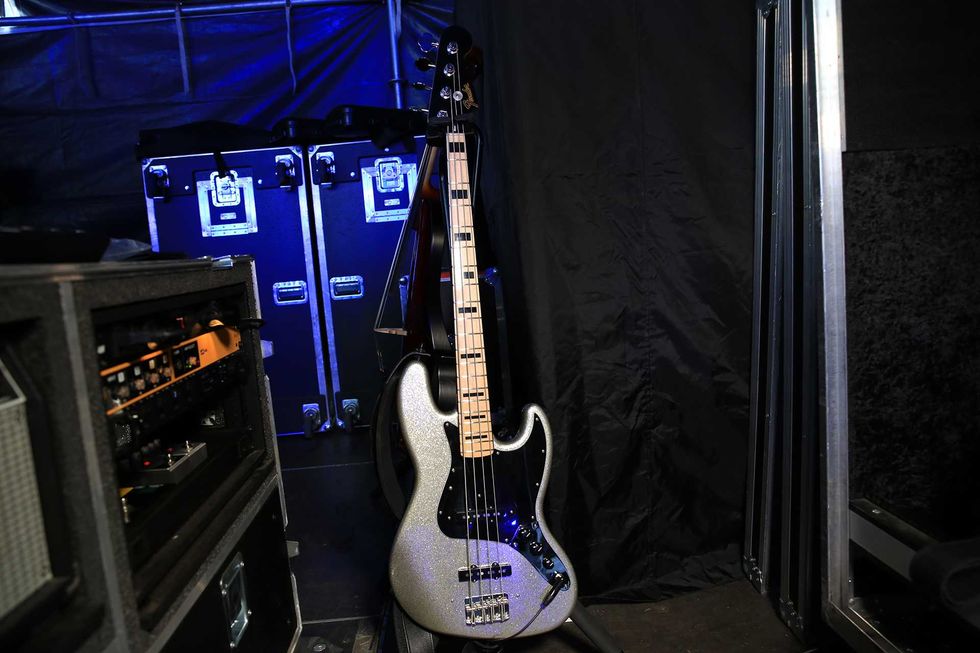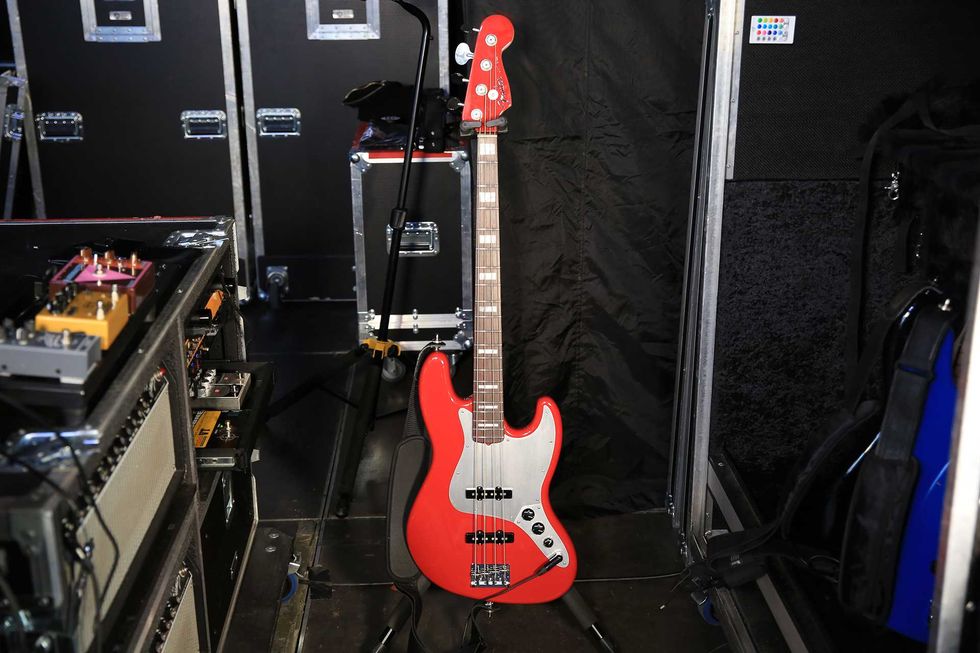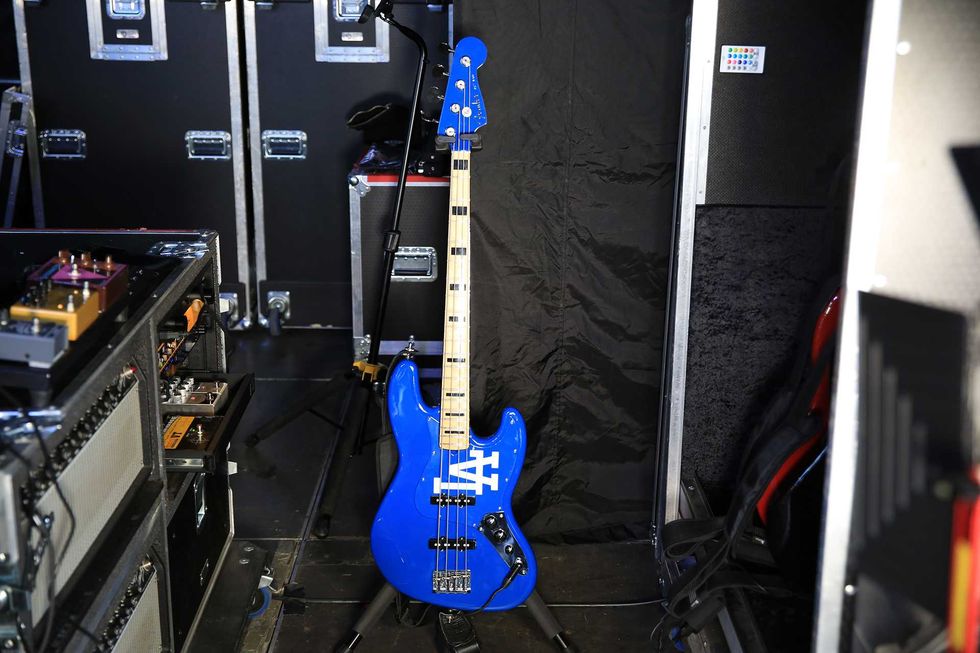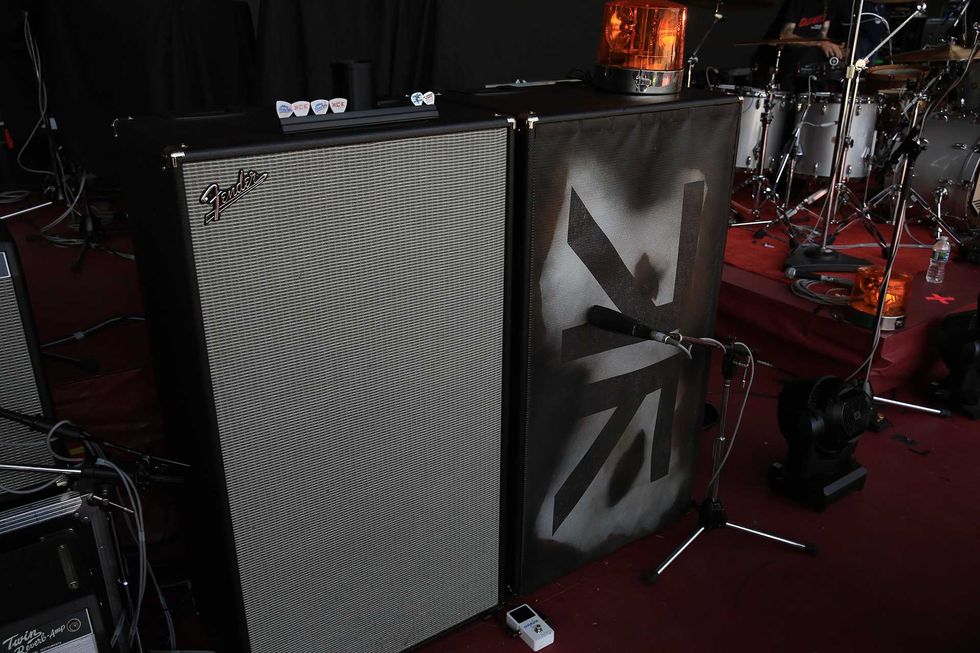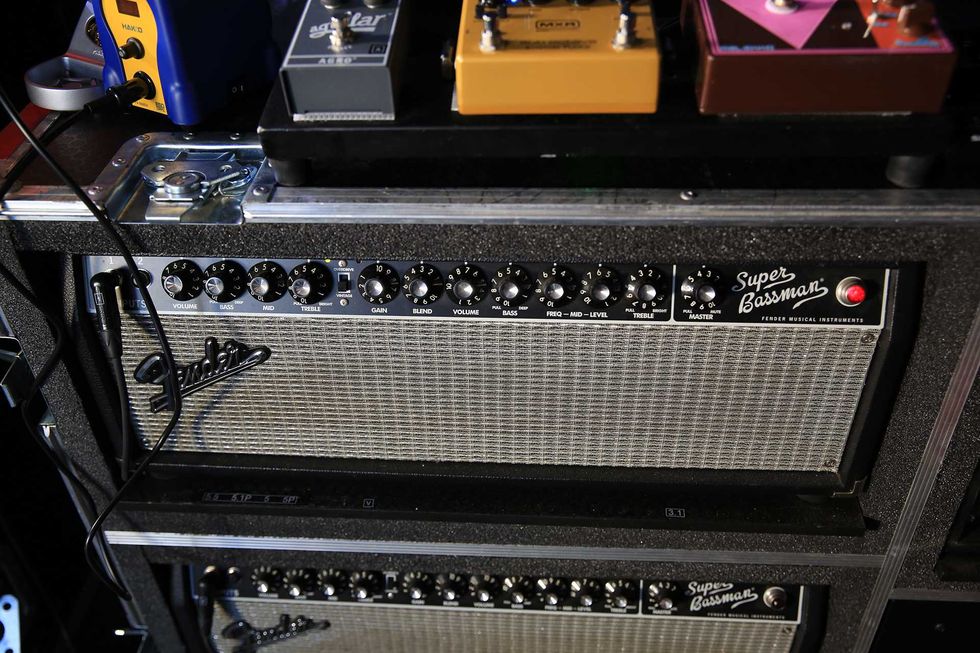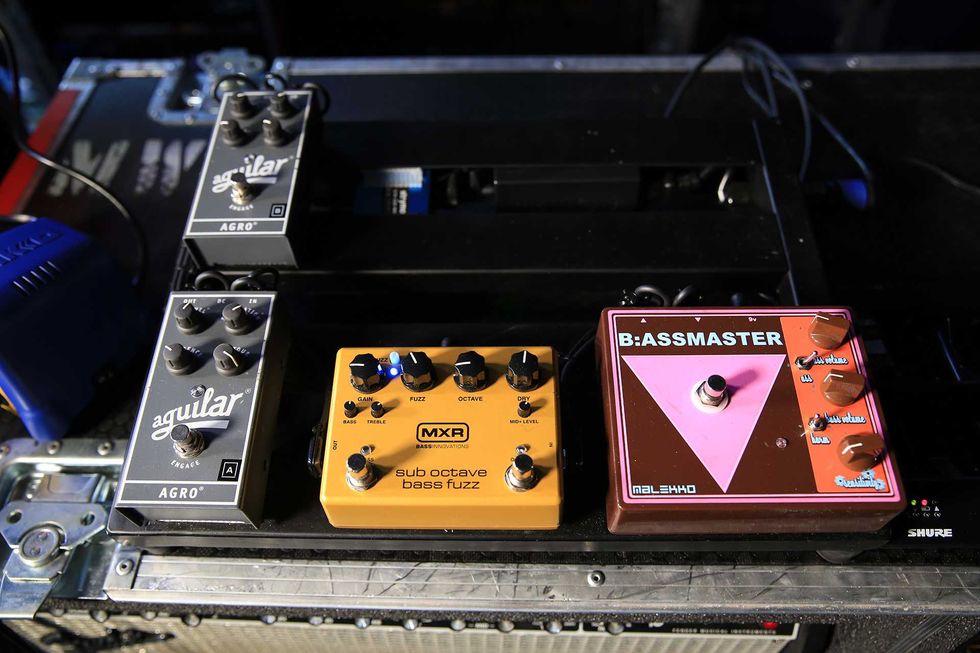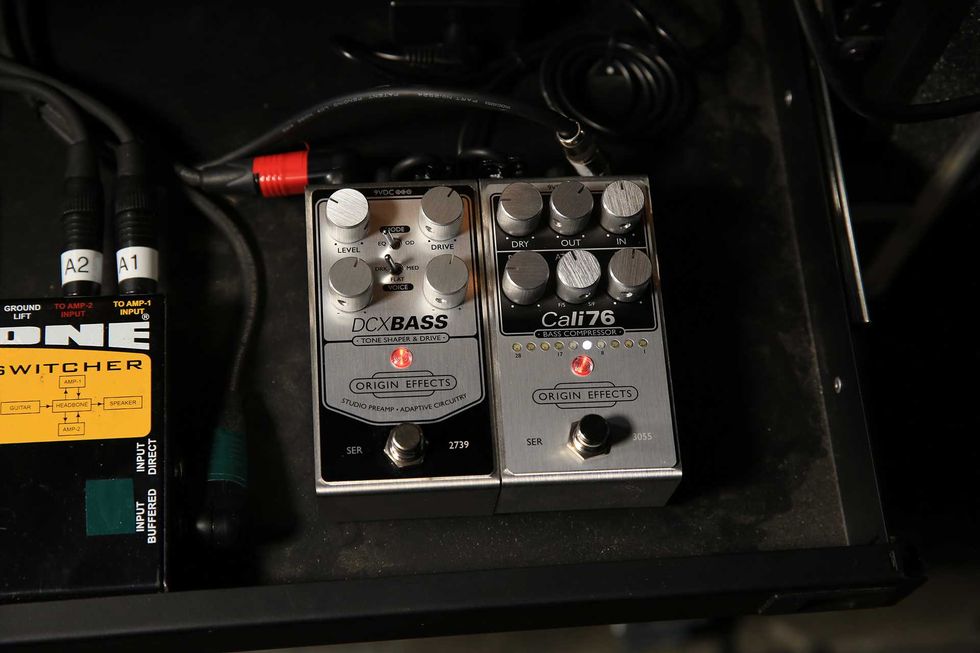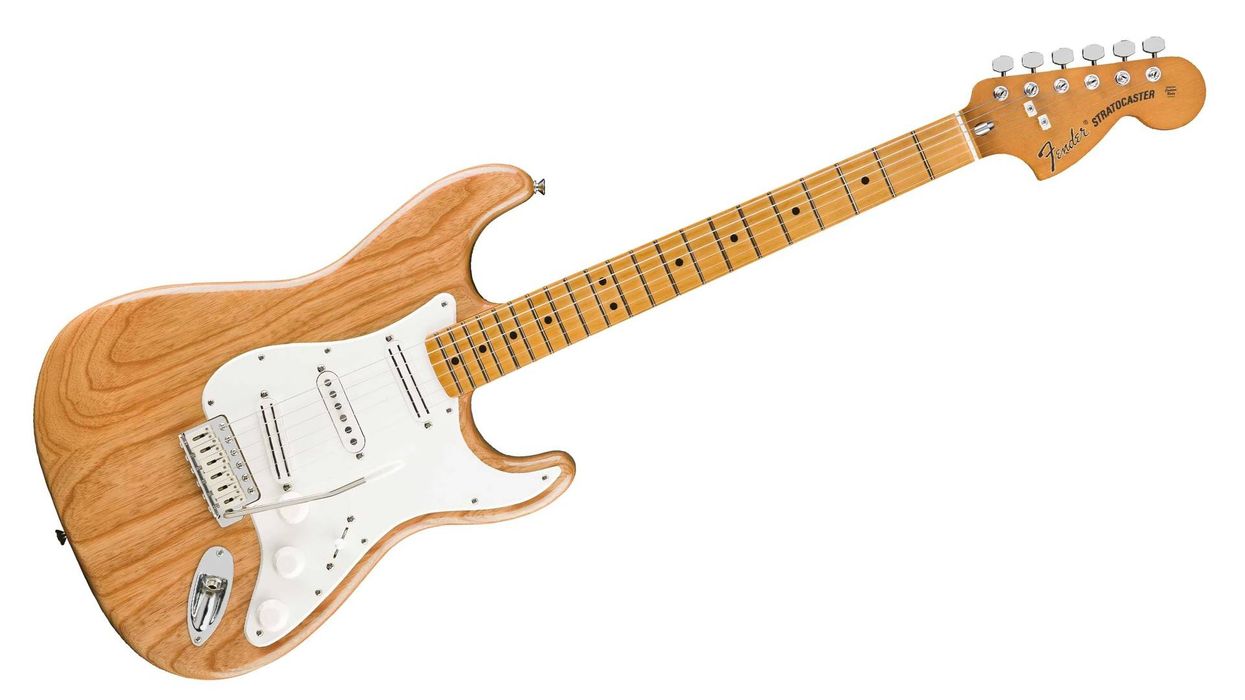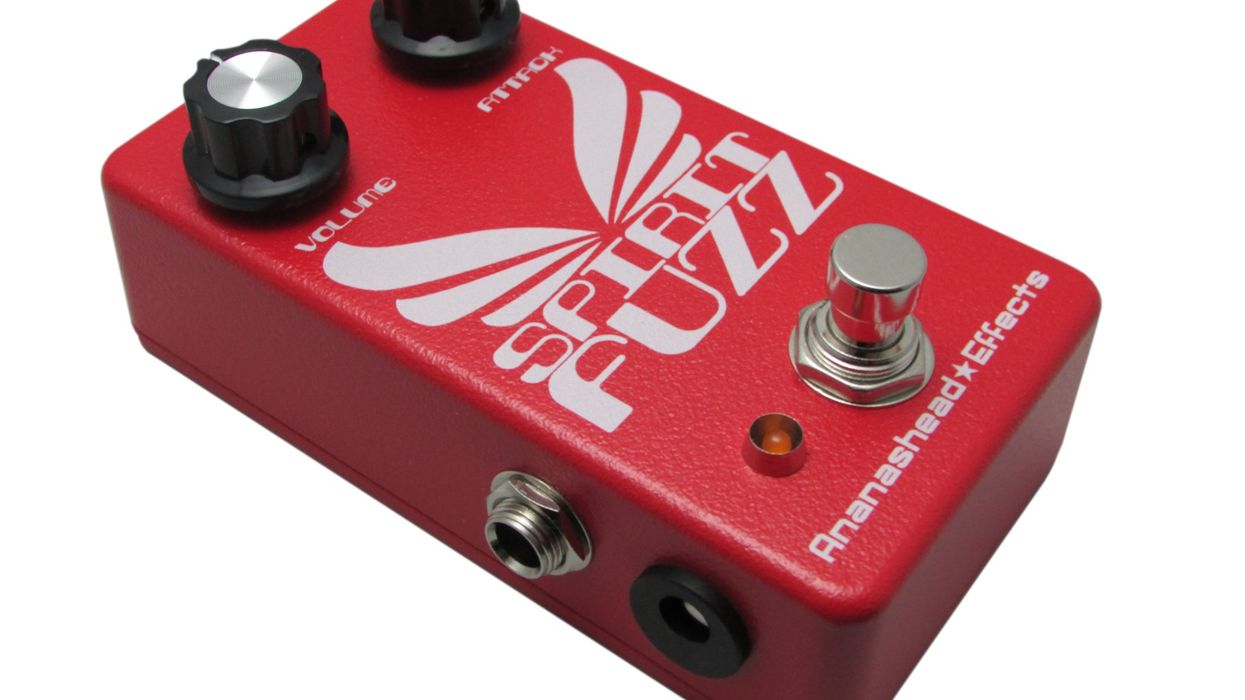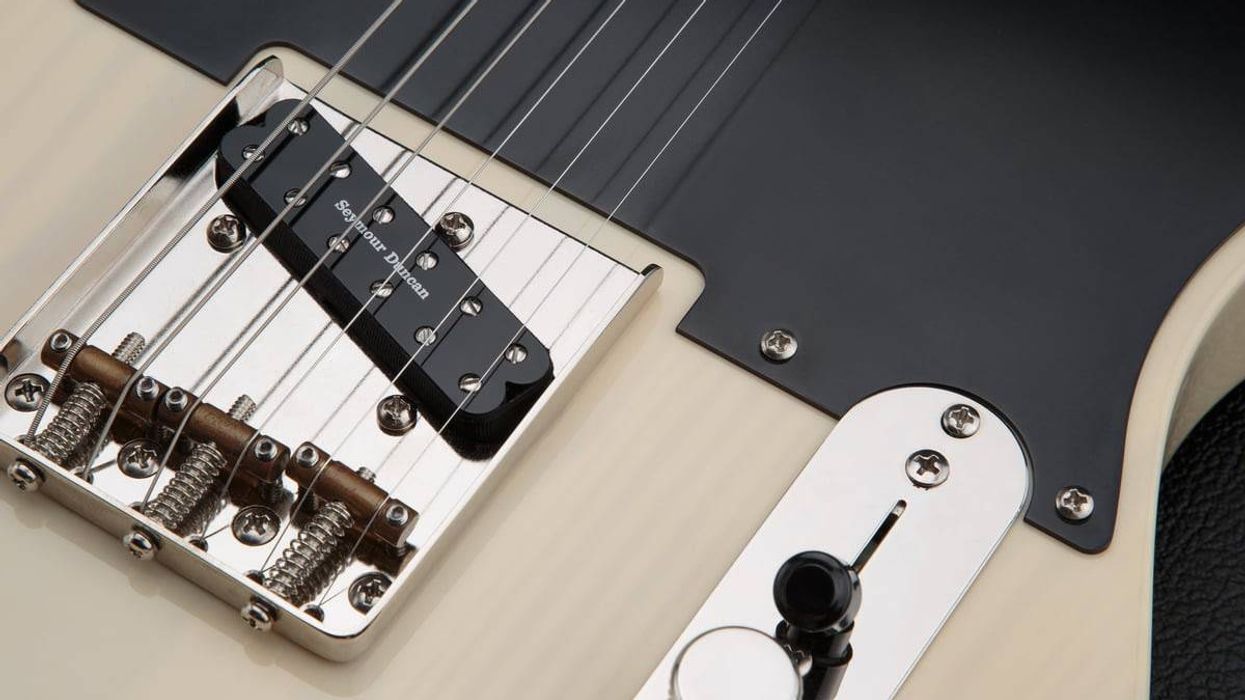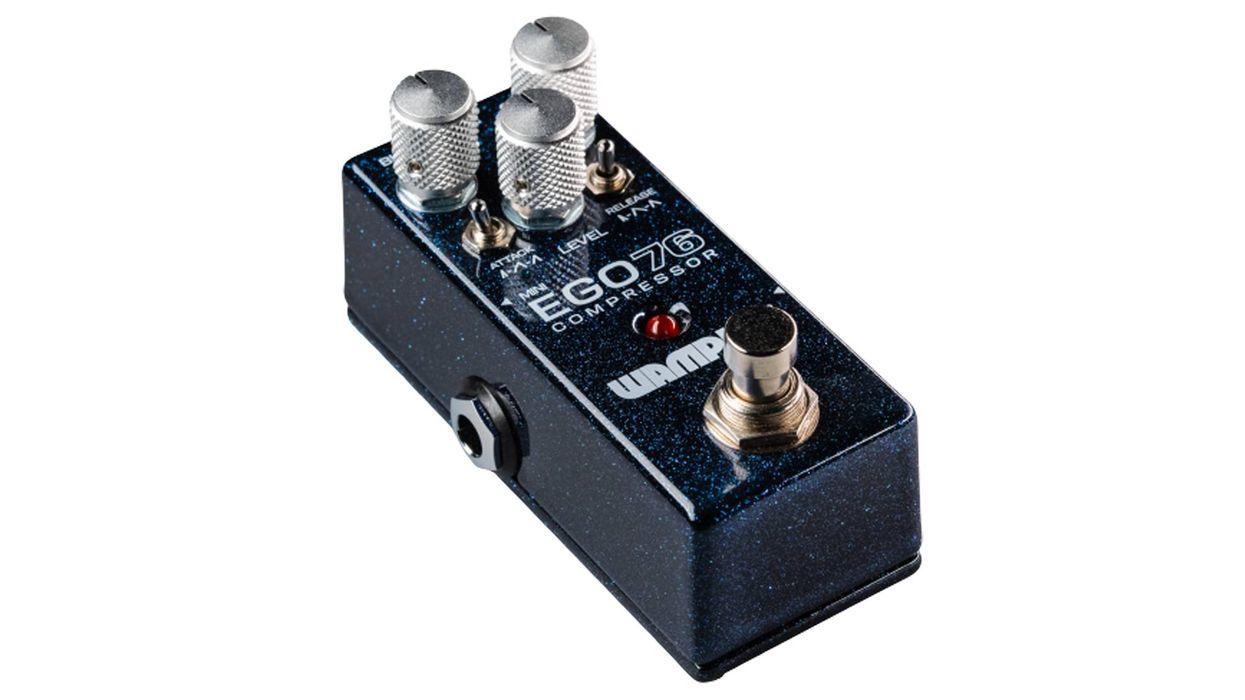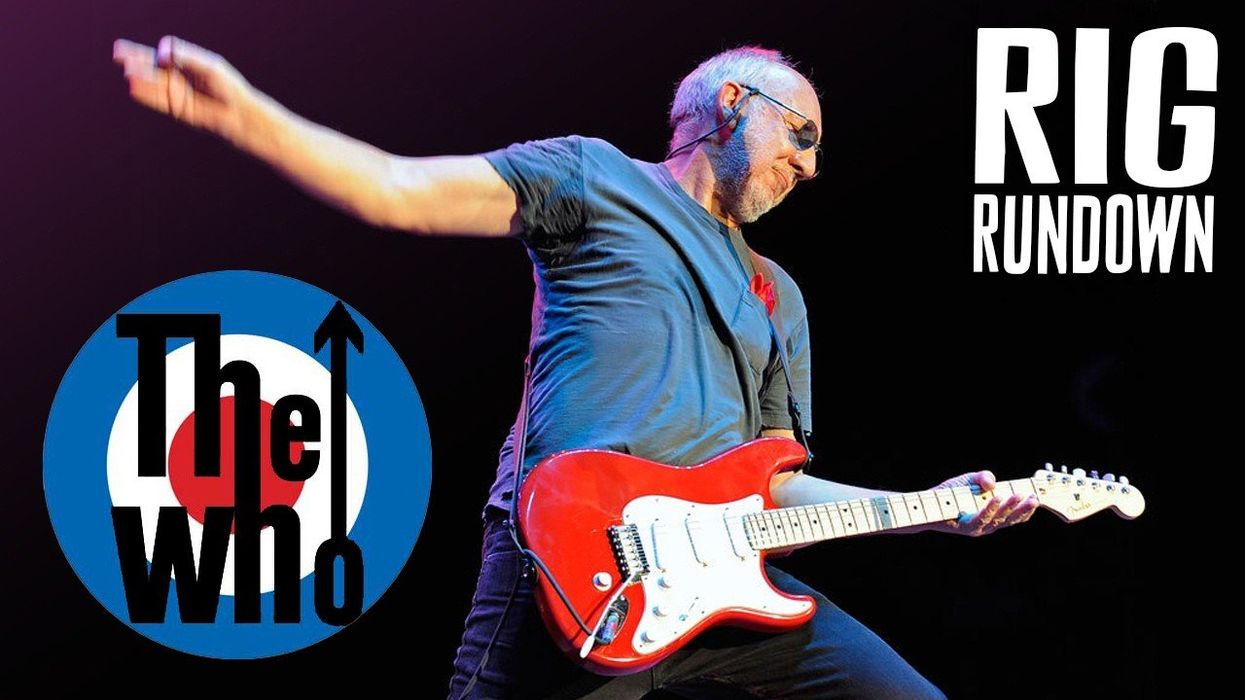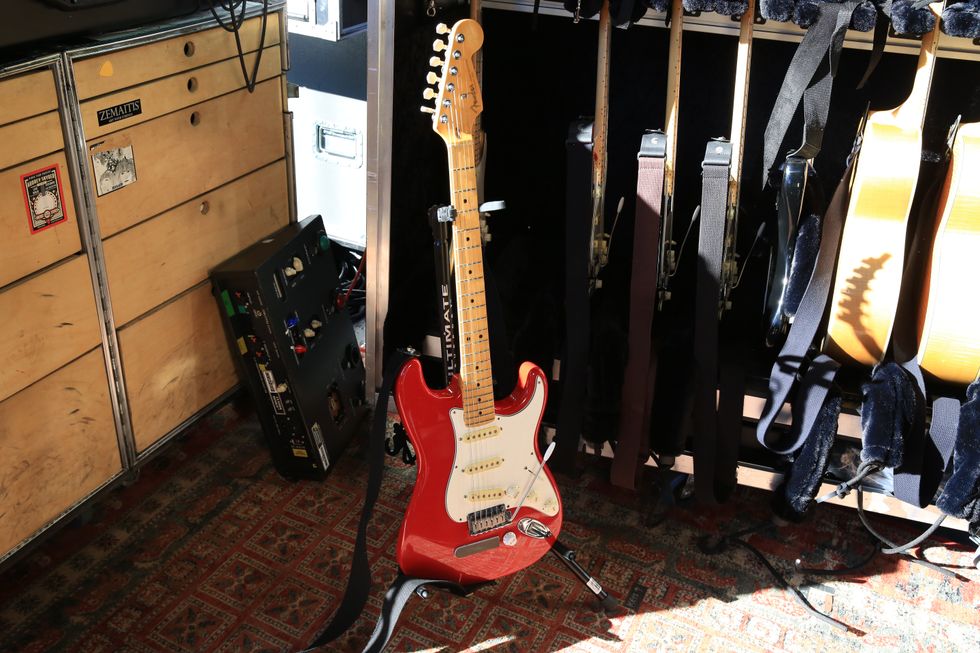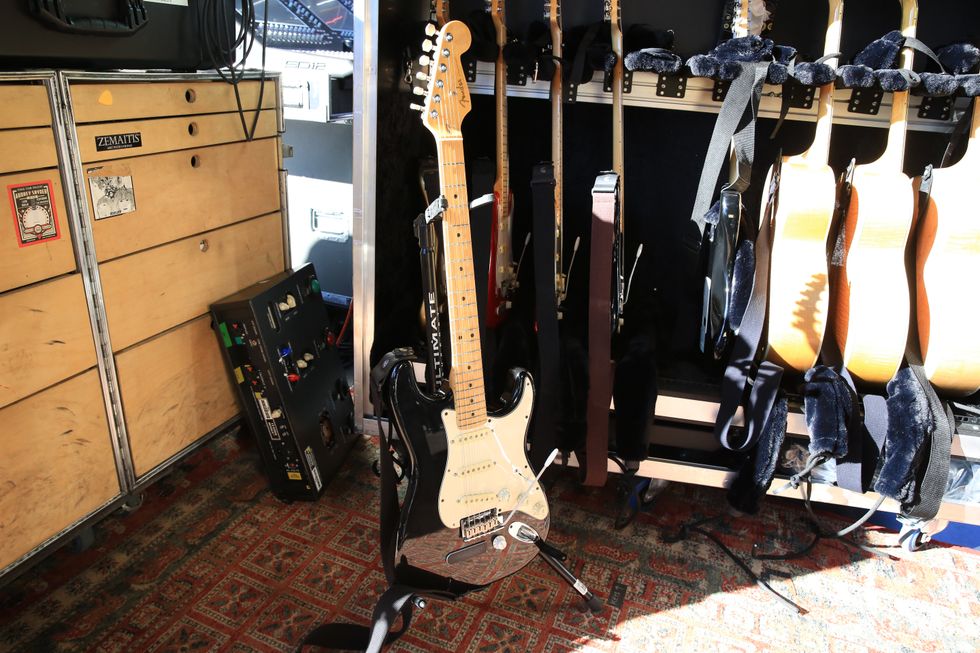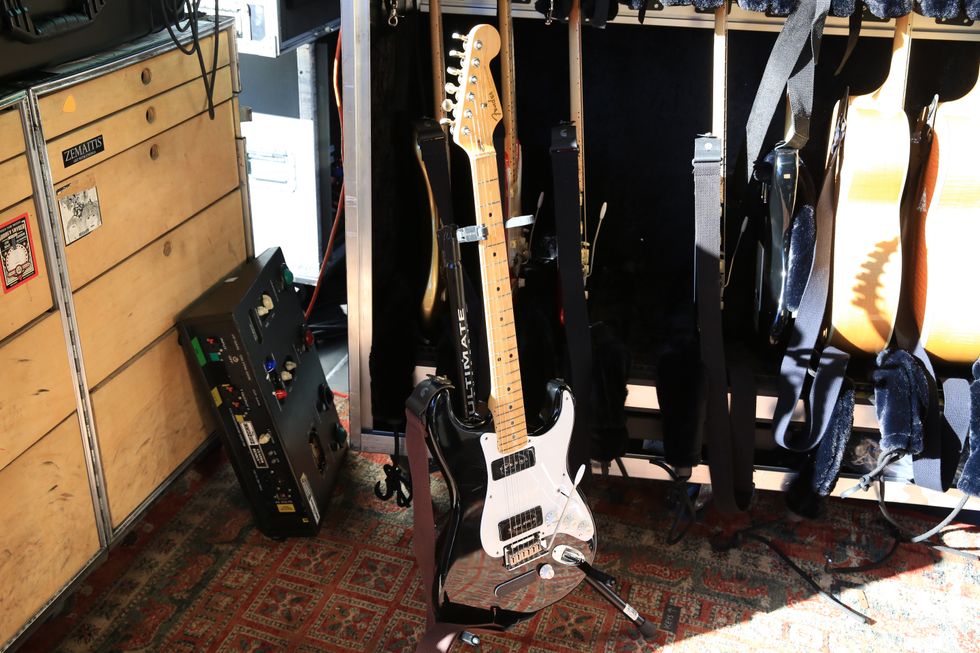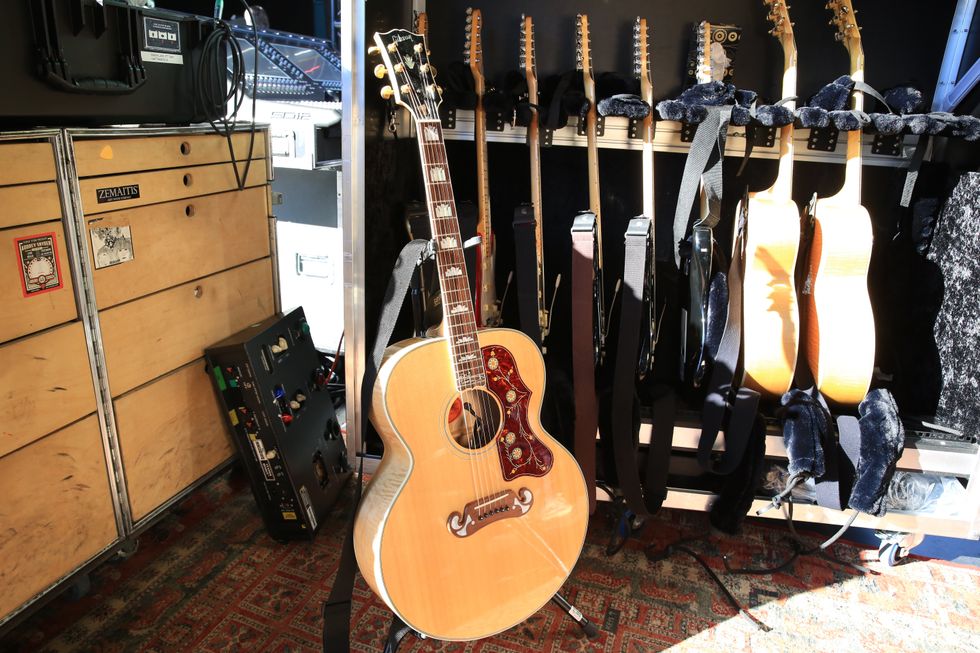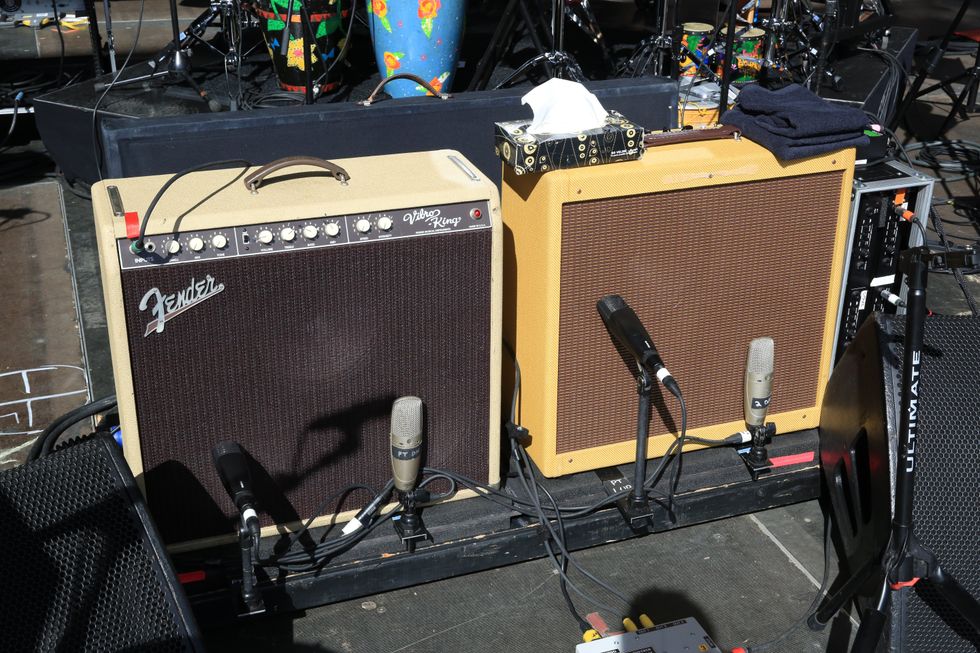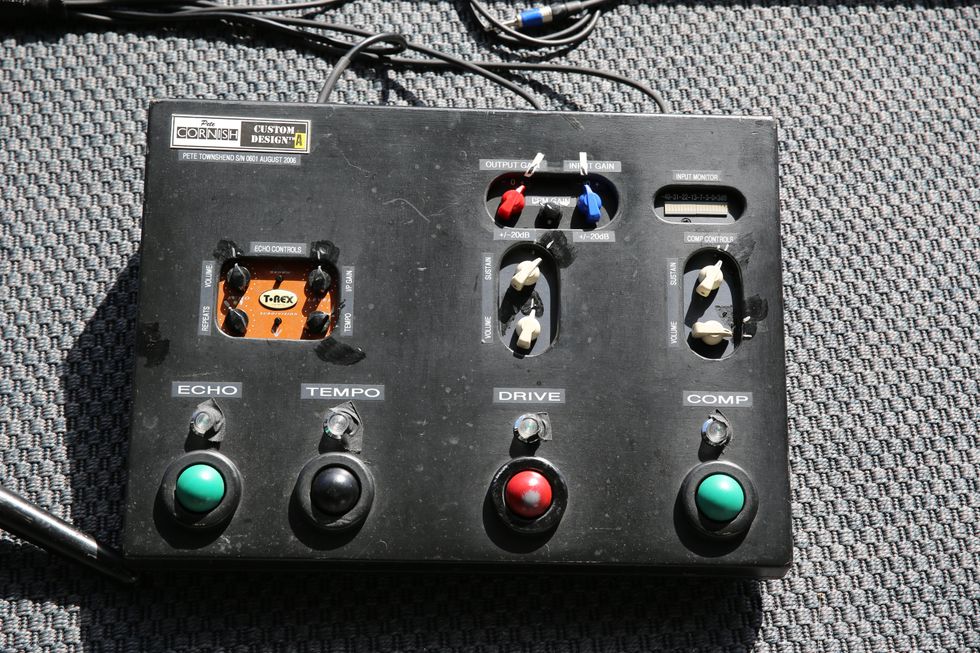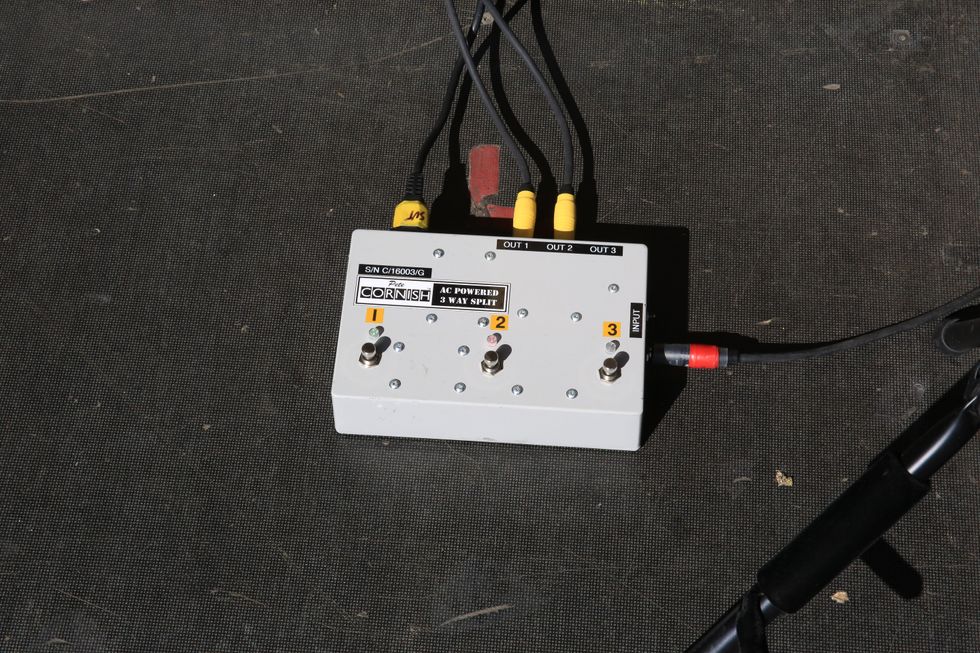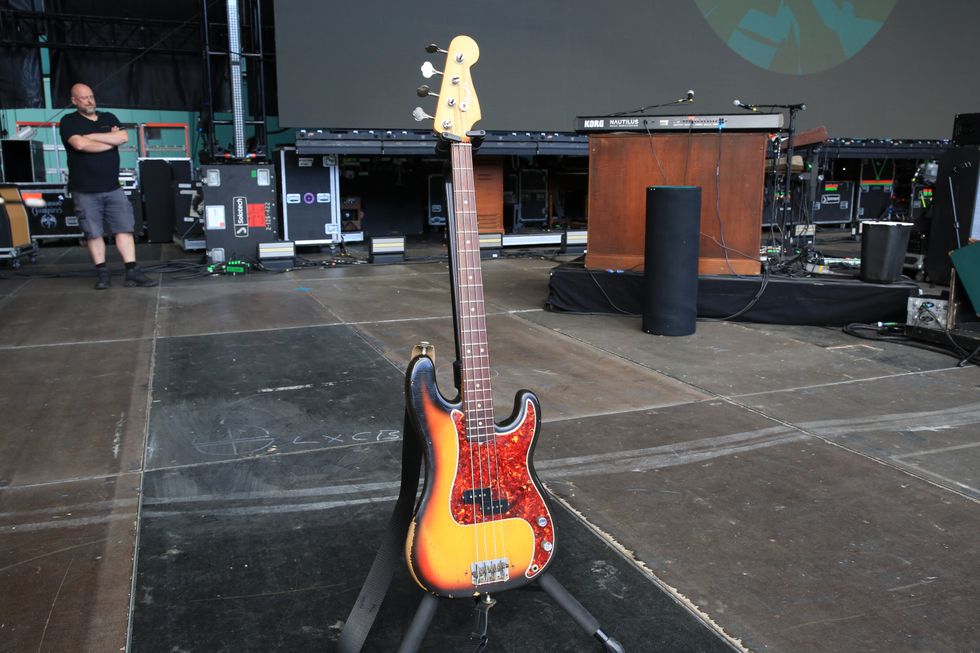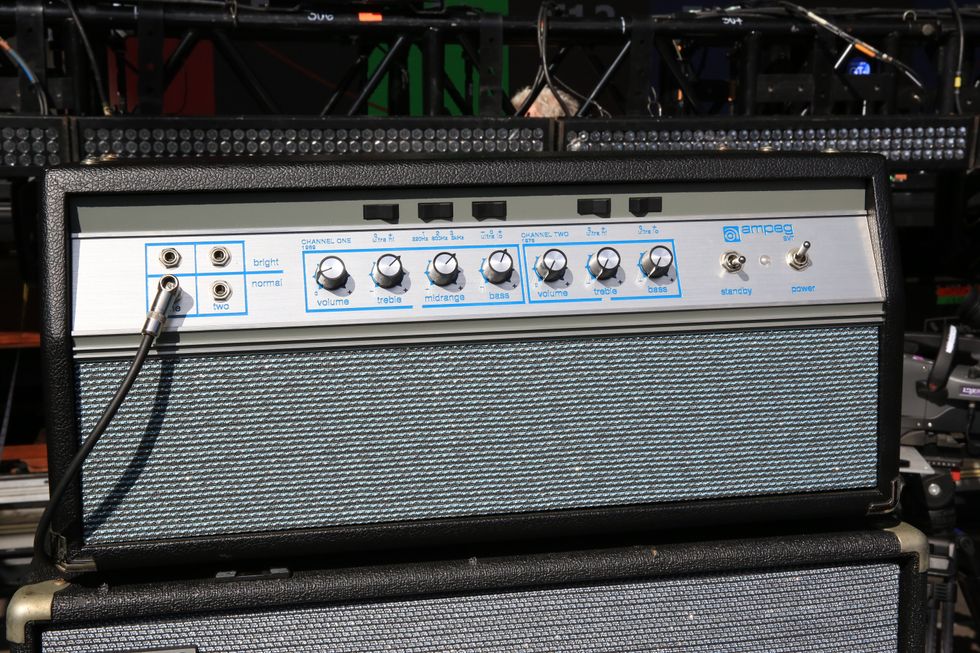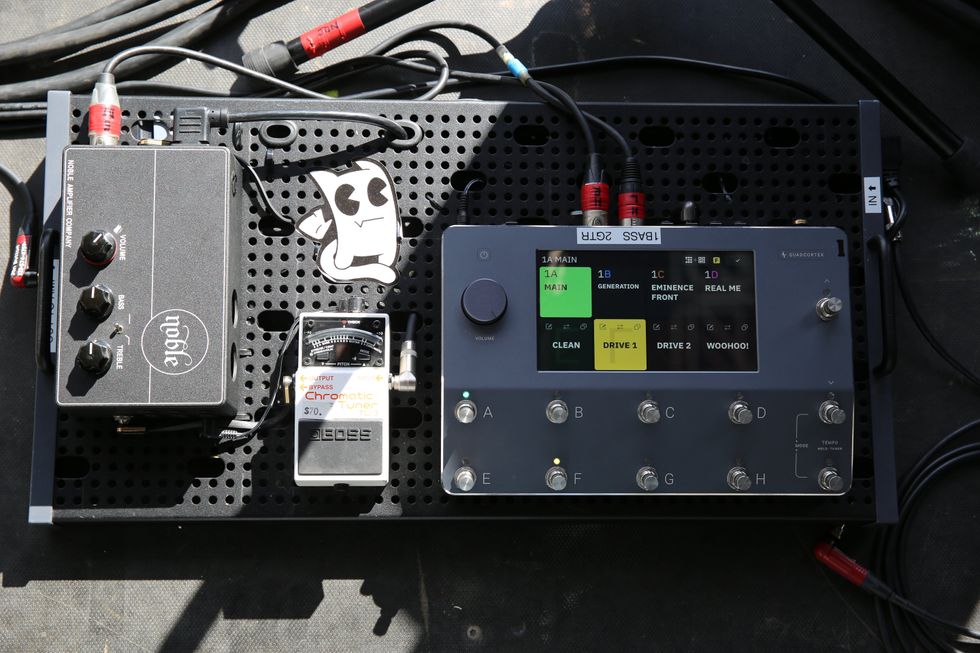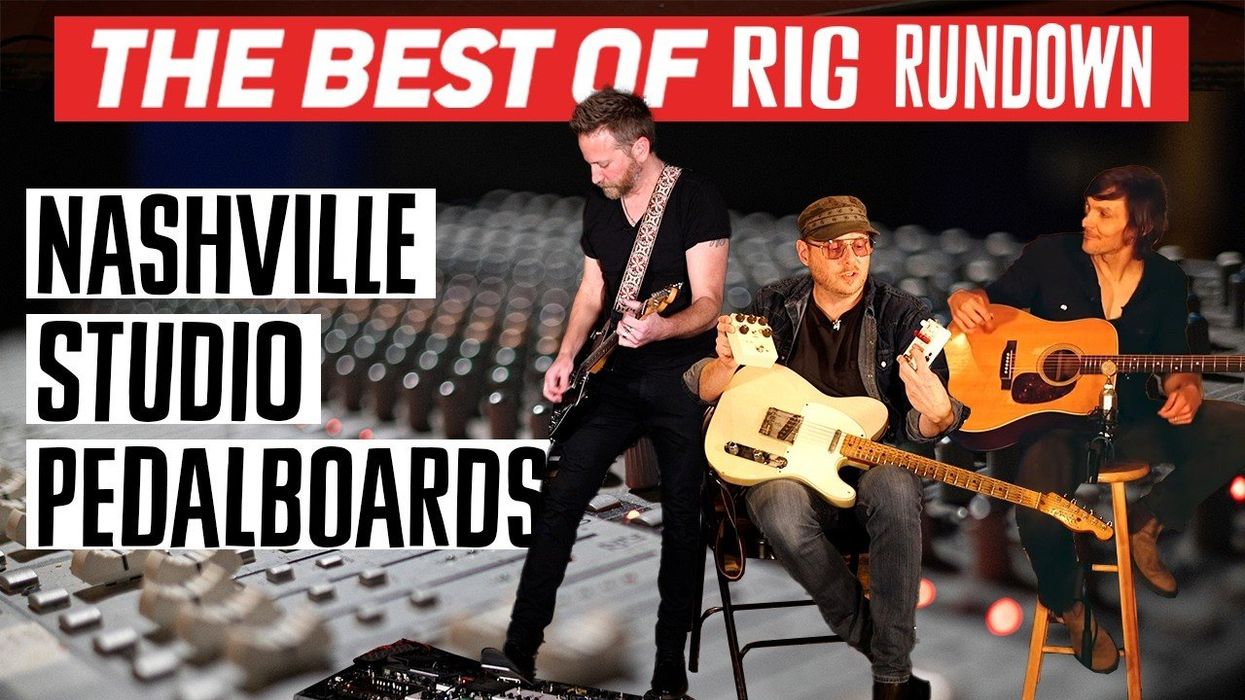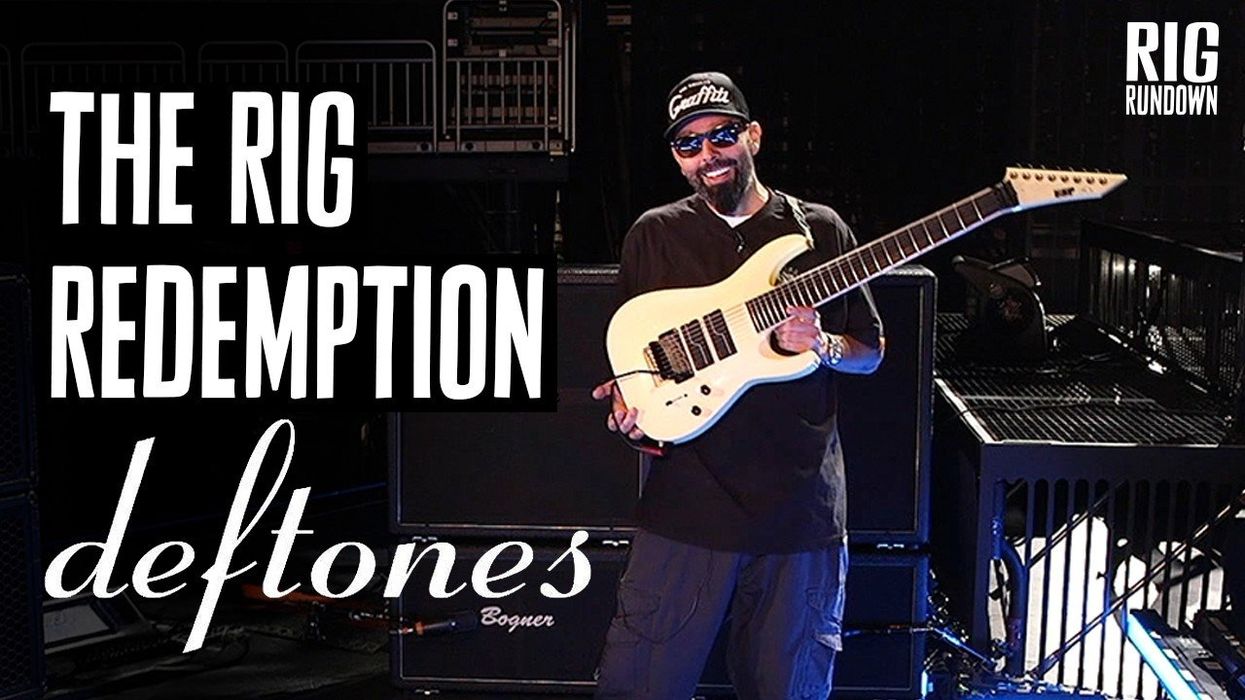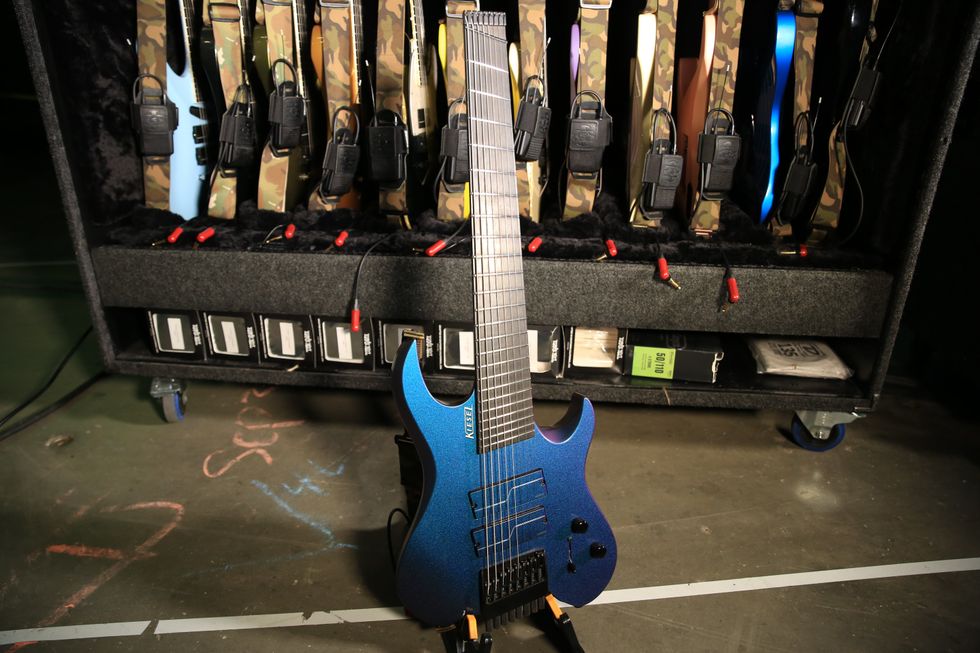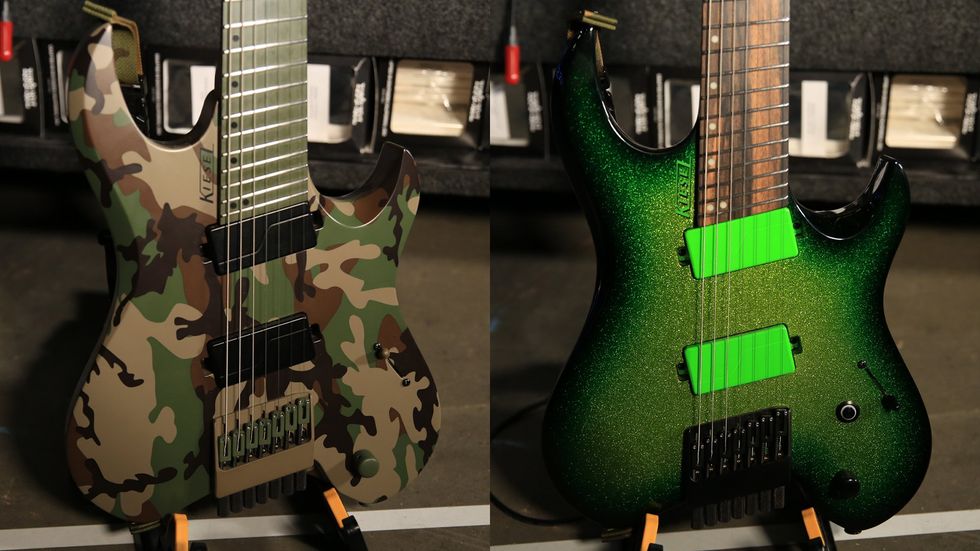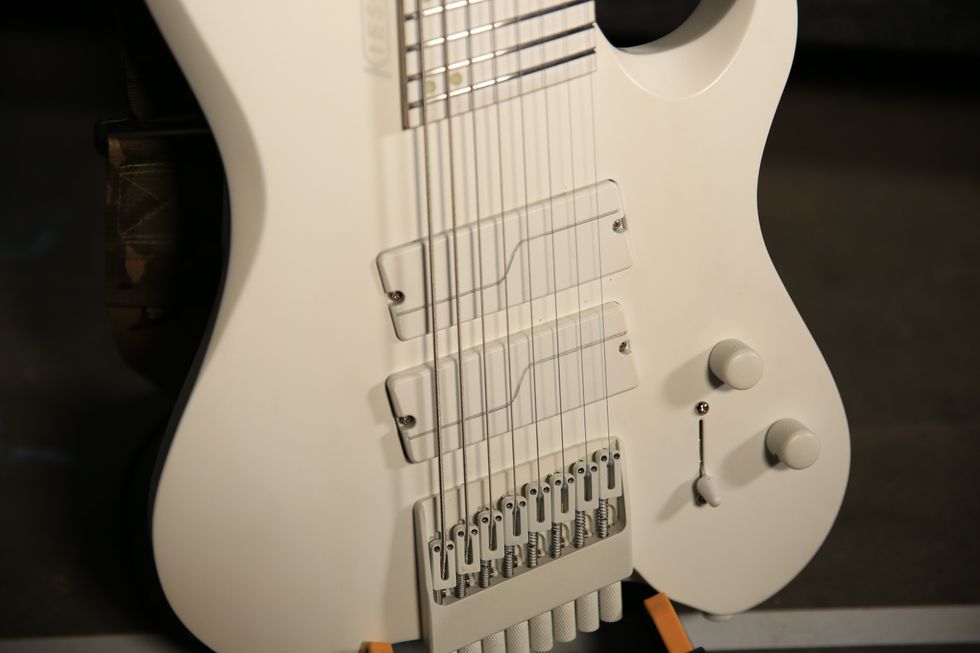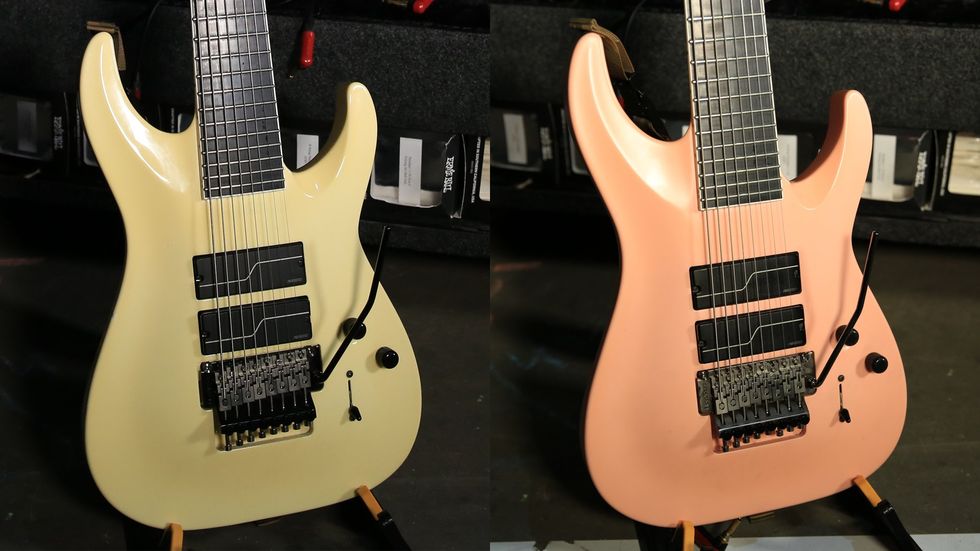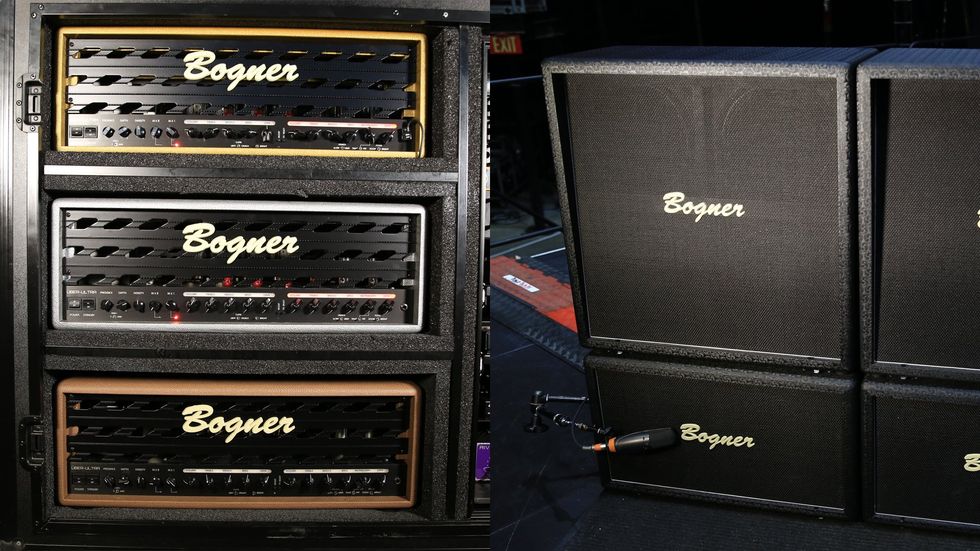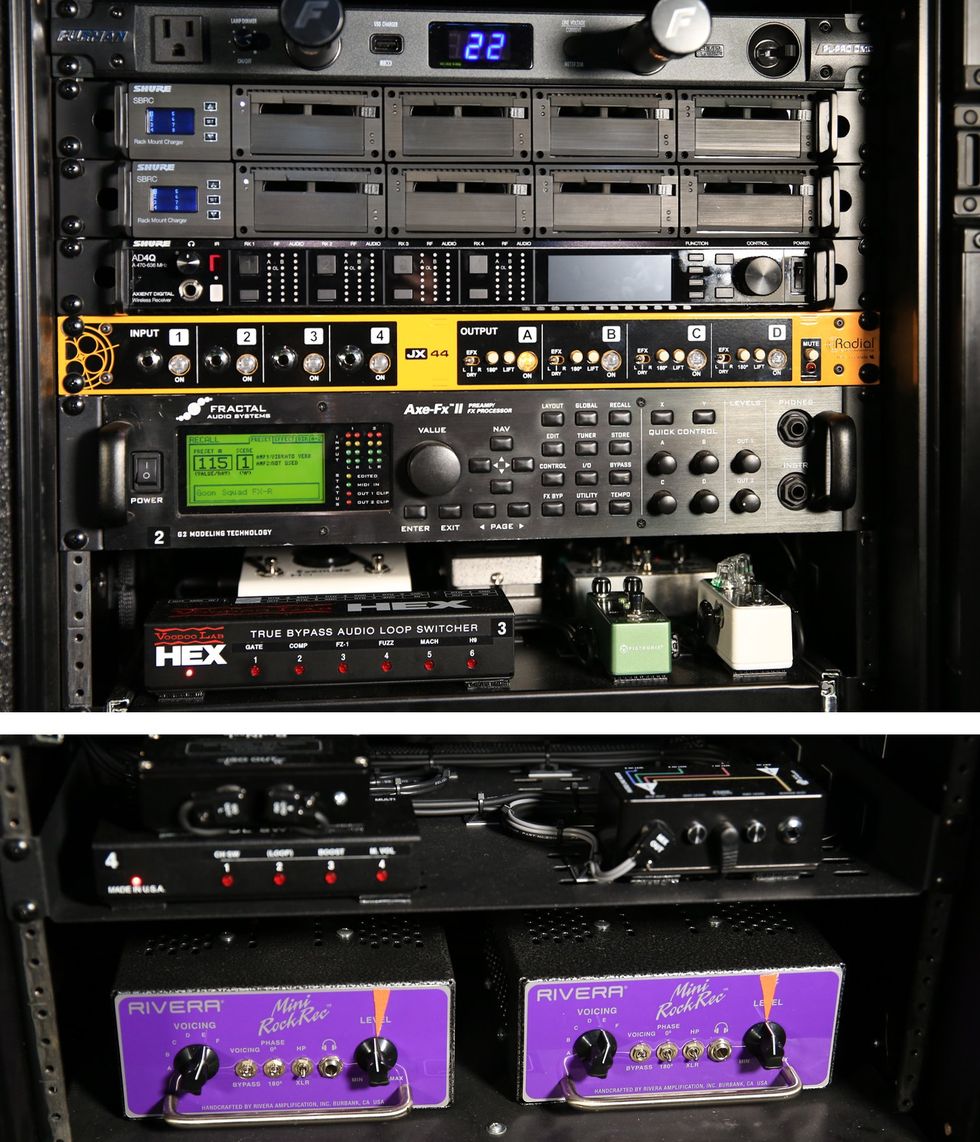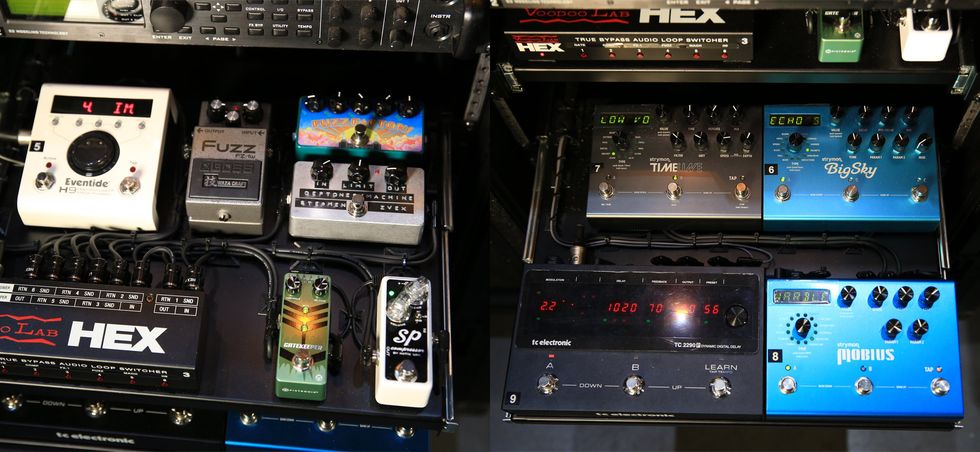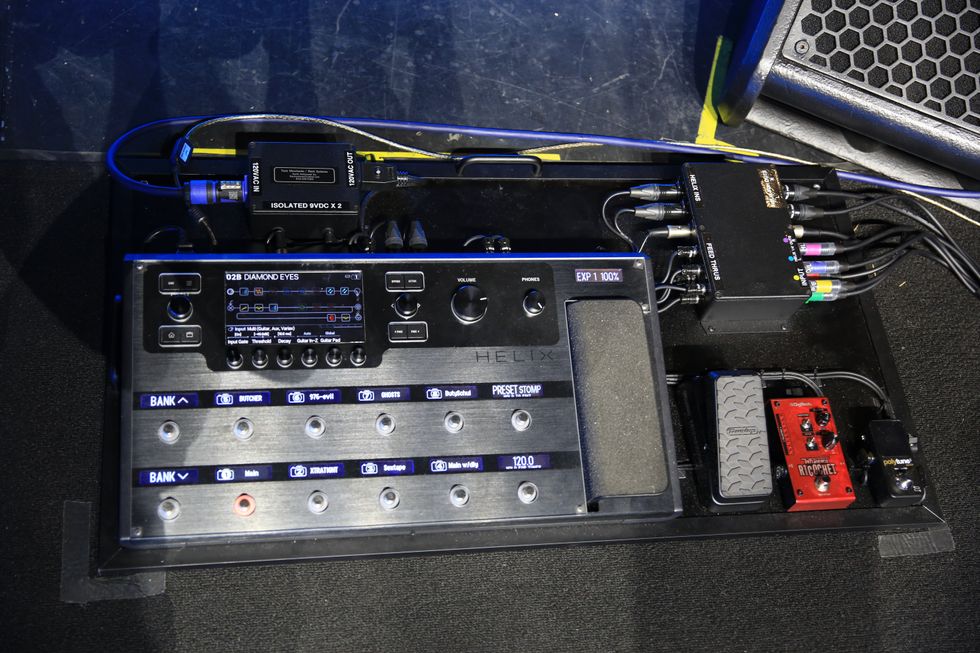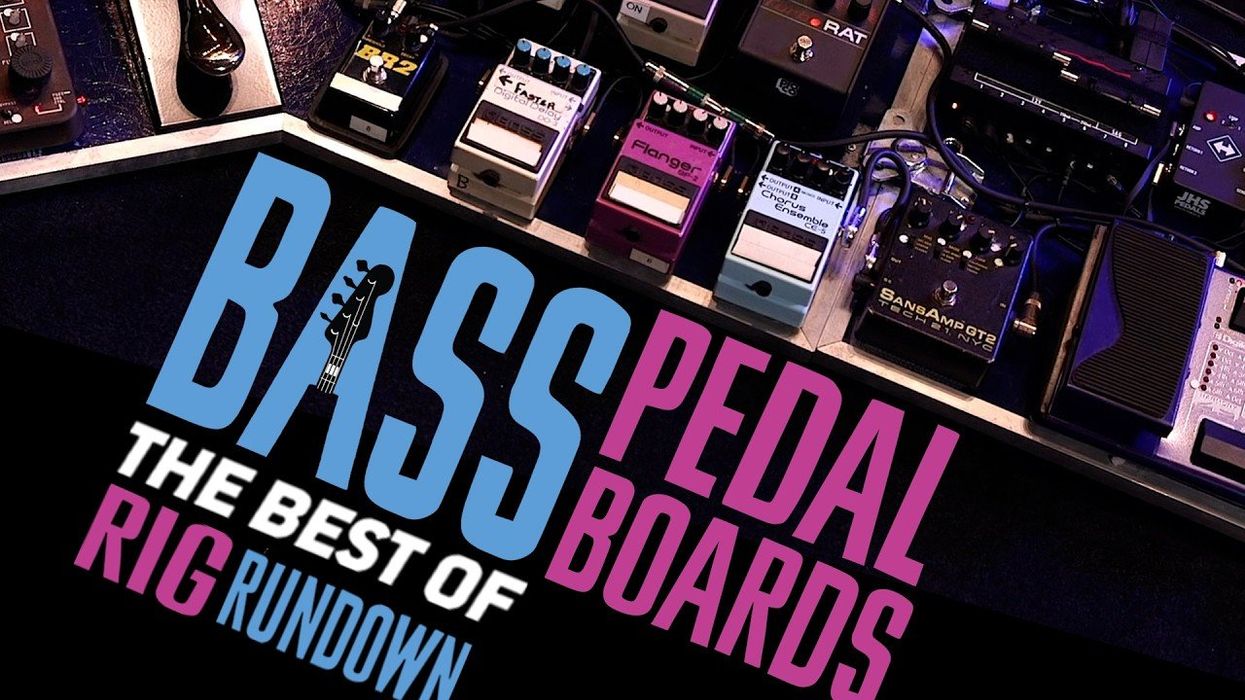A slew of top-notch vintage and custom Strats, a 1960 Les Paul, and a wall of Dumbles keep the blues-rocker rolling.
It’s been 11 years since Kenny Wayne Shepherd filmed his previous Rig Rundown. PG’s John Bohlinger caught up with the blues-rocker before his recent sold-out show at Nashville’s historic Ryman Auditorium to hear some killer playing and see some untouchable—by anyone but Kenny and his tech—gear.
The tour stop was supporting the December 2022 release of Trouble Is … 25, a re-recording of his 1997 breakthrough album, which had four top 10 hits when it was originally issued: “Slow Ride,” “Somehow, Somewhere, Someway,” “Everything is Broken,” and “Blue on Black.” There have been seven other studio recordings since then, and while he’s still mostly a Strat player, some other instruments have joined his armada, too. And Dumbles … he has lots of Dumbles.
Brought to you by D’Addario XS Strings.
Old No-Paint
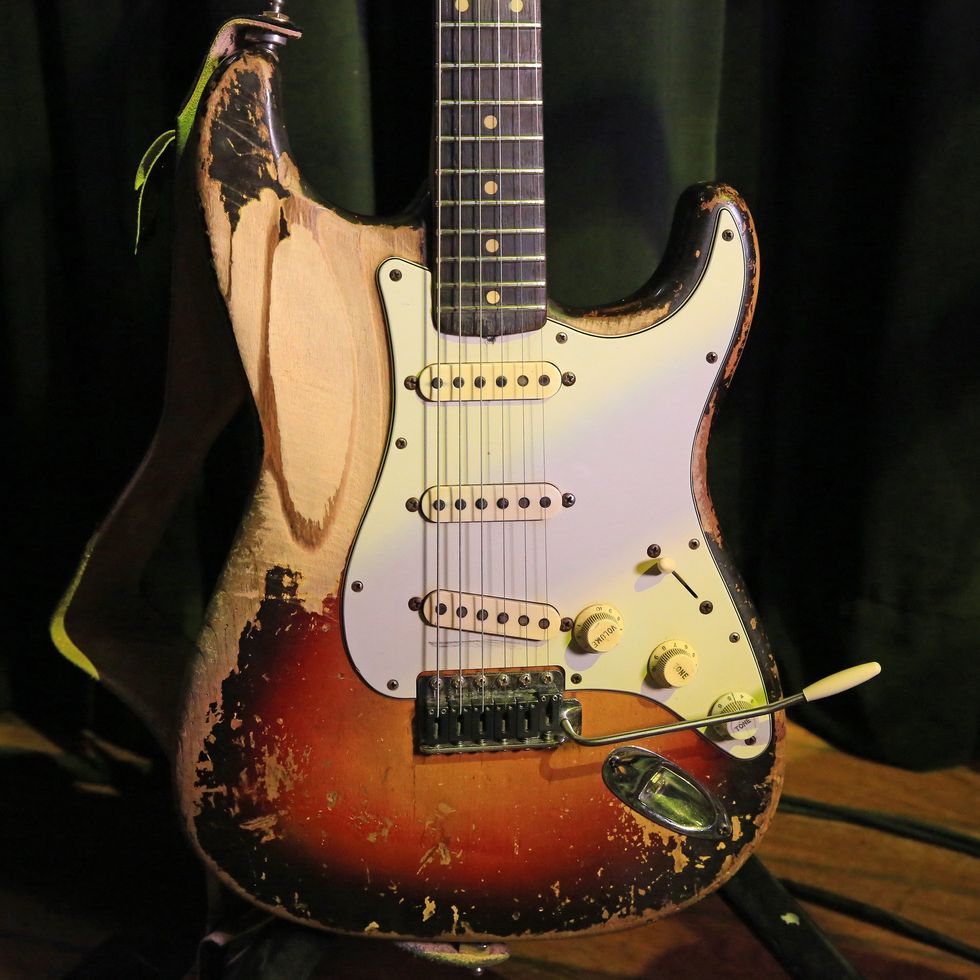
This 1961 Fender Stratocaster has been Shepherd’s No. 1 since he bought it right as his career began to take off. Like all of his electrics, it stays strung with Ernie Balls—.011, .014, .018, .038, .048, and .058.—and is played with Dunlop heavy picks.
Tone Twin
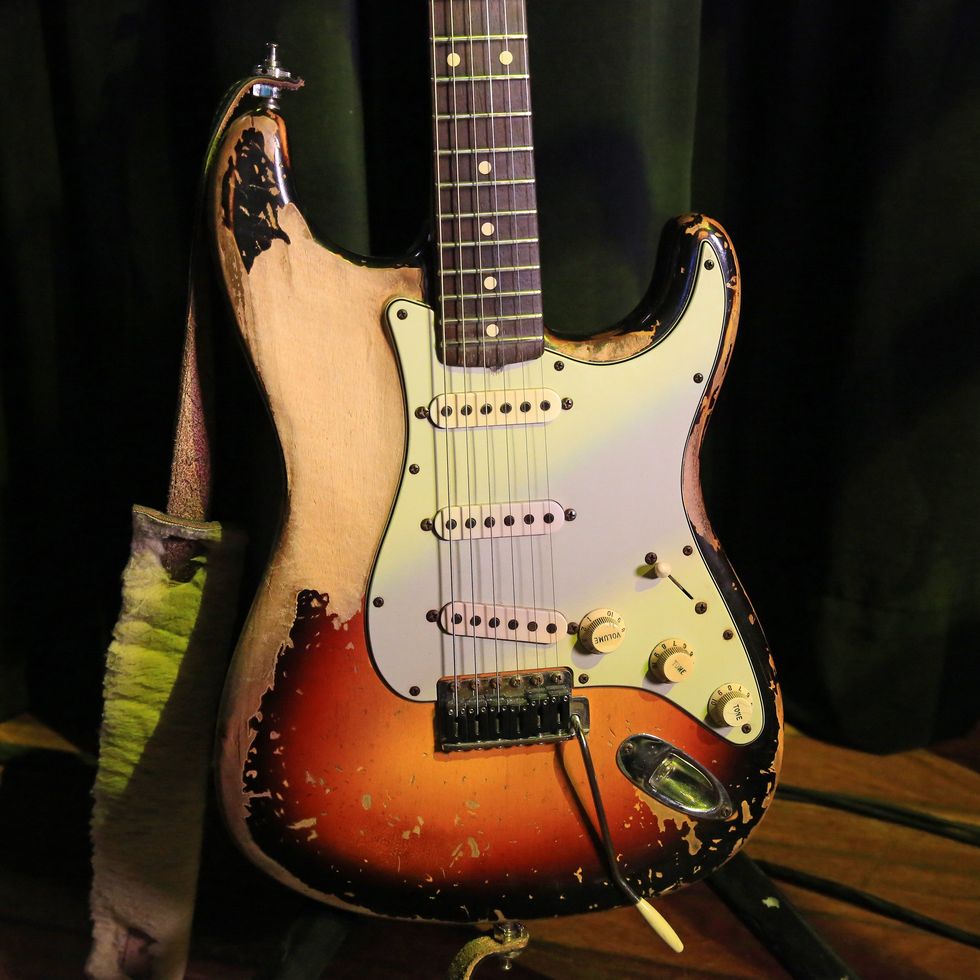
Fender built Shepherd a nearly identical version of his 1961 to save wear and tear on the original. Pretty exacting custom relic work!
Jimi's Jammer
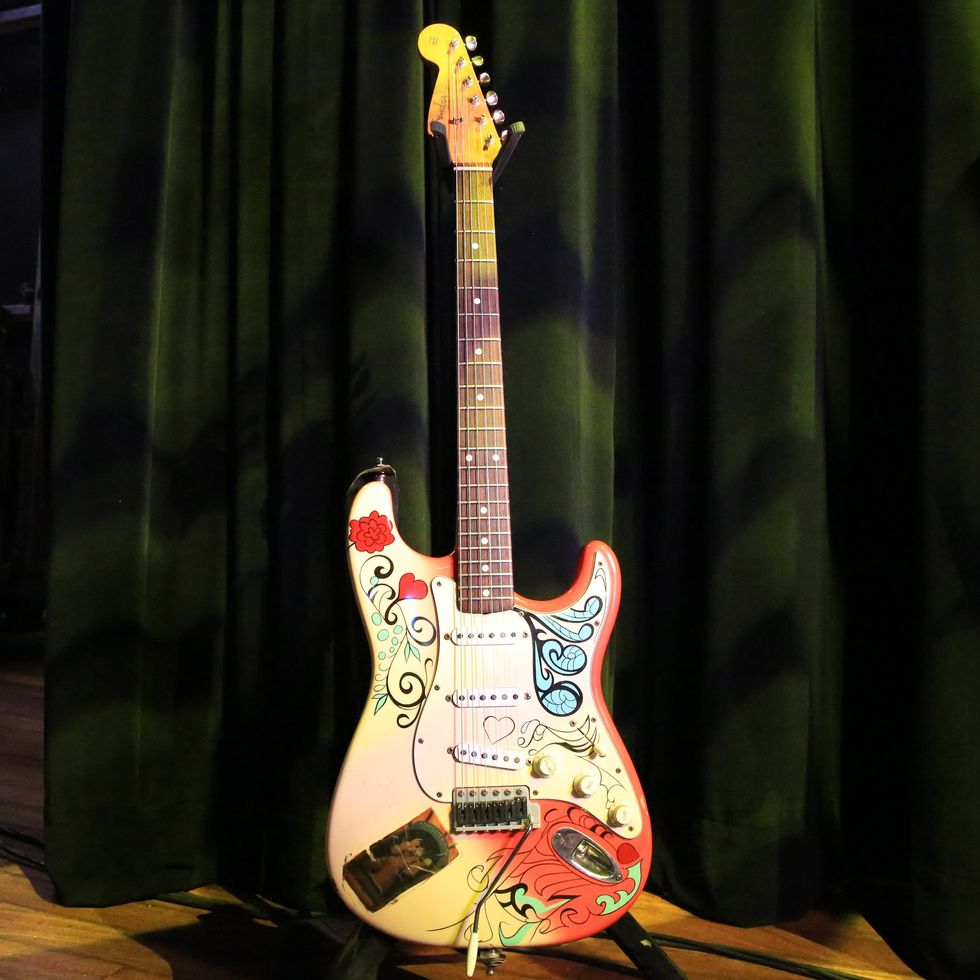
Here’s a Fender Jimi Hendrix Monterey Strat. The Fullerton giant made just more than 200 replicas of the guitar that Jimi played and burned onstage at the Monterey Pop Festival, in 1967. When Shepherd got the guitar he immediately had Fender make him a custom neck with jumbo frets and a backwards headstock. Graph Tech saddles were also added to this work of art.
Down to the Crossroads
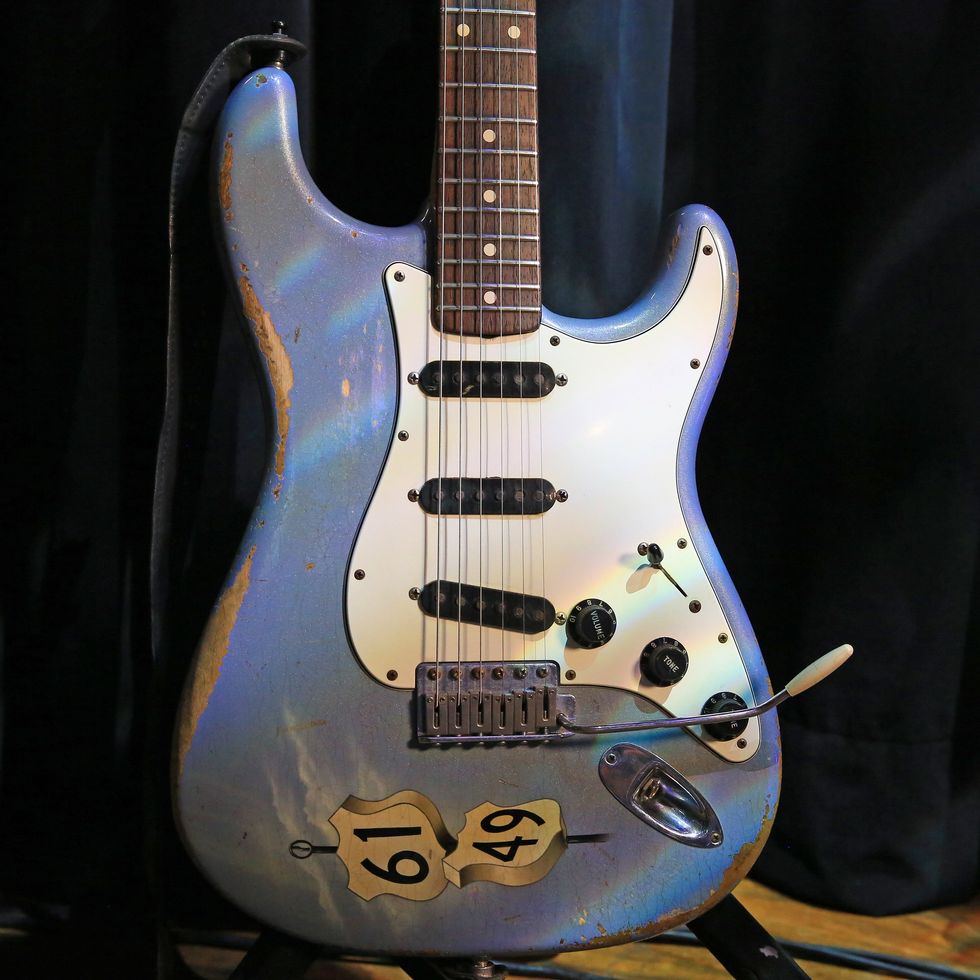
Inspired by the famed Mississippi Delta intersection where Robert Johnson, by fable, cut his deal with the devil, this Strat with the Highway 61 and Highway 49 signs was created by Shepherd and Fender Custom Shop master builder Todd Krause over two years, and completed in 2015. This distinctive relic’d instrument has an alder body, a rosewood fretboard, Graph Tech saddles, and black knobs and pickup covers.
Sunny ’60 Shop
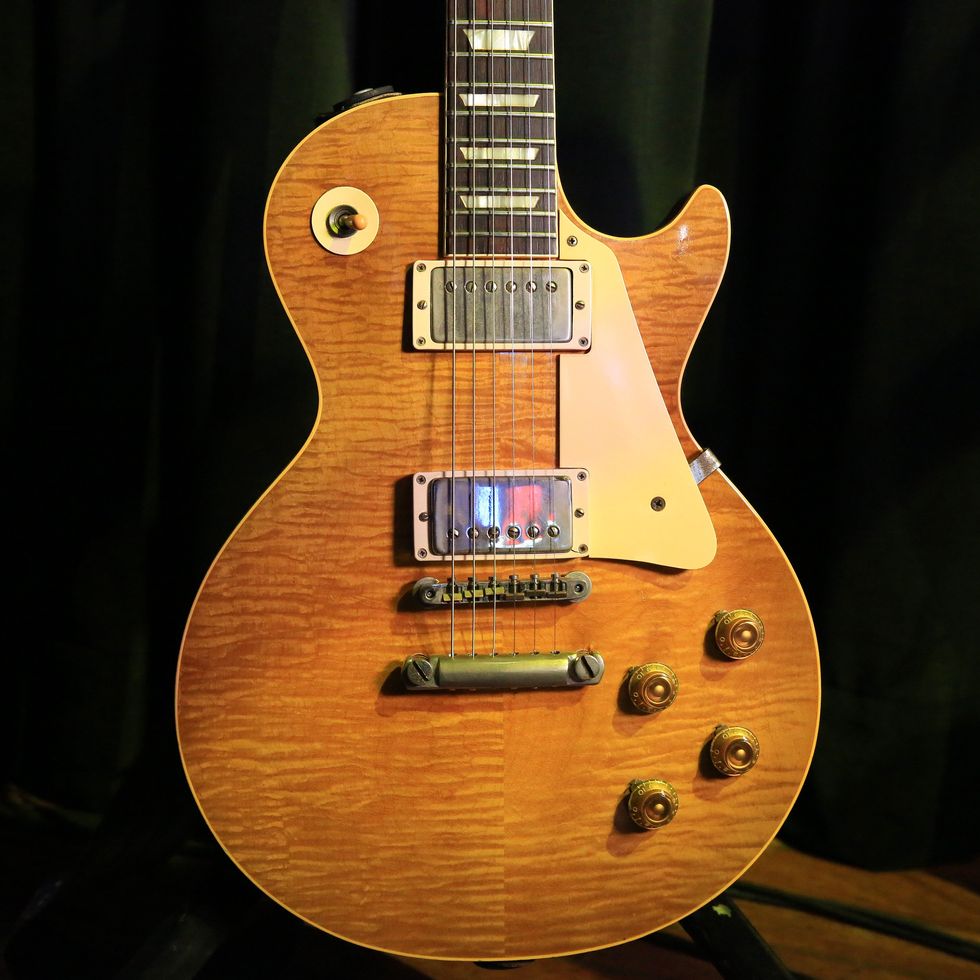
The only thing that’s been changed on this 1960 sunburst Gibson Les Paul is the jack plate and toggle surround. The rest is all original, including the frets.
Shut the Front Door (Or the Cows Will Get Out)
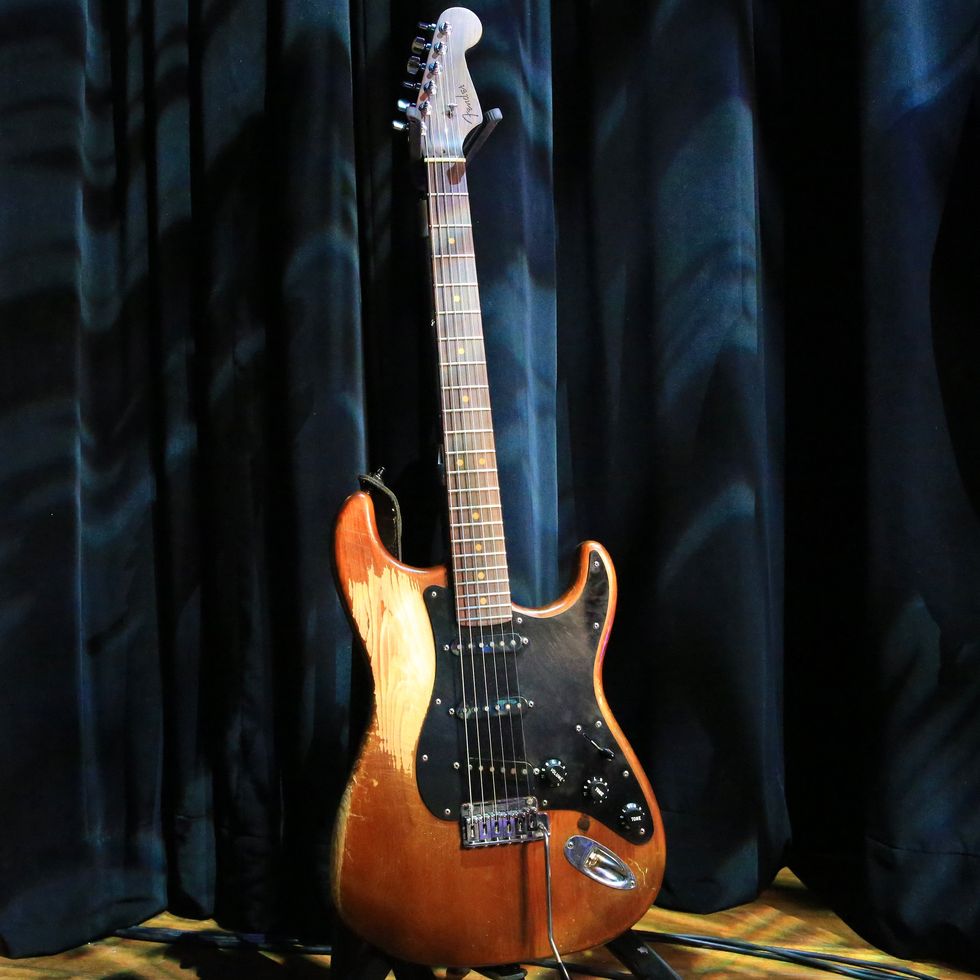
This limited edition reclaimed pinewood Strat’s body came from a barn built in the 1800s in Lake Odessa, Michigan. It has a rosewood neck with a hand-rubbed oil finish and a comfortable, modern C neck profile. Other features include a 9.5"-radius, 25.5" scale rosewood fretboard with 22 medium jumbo frets, three Fender Custom Shop Fat ’50s single-coil Stratocaster pickups with 5-way switching, an unbuffed single-ply black pickguard, a two-point synchronized tremolo bridge with vintage-style stamped steel saddles, Micro-Tilt neck adjustment, and a laser-etched headstock logo.
Sig to Dig
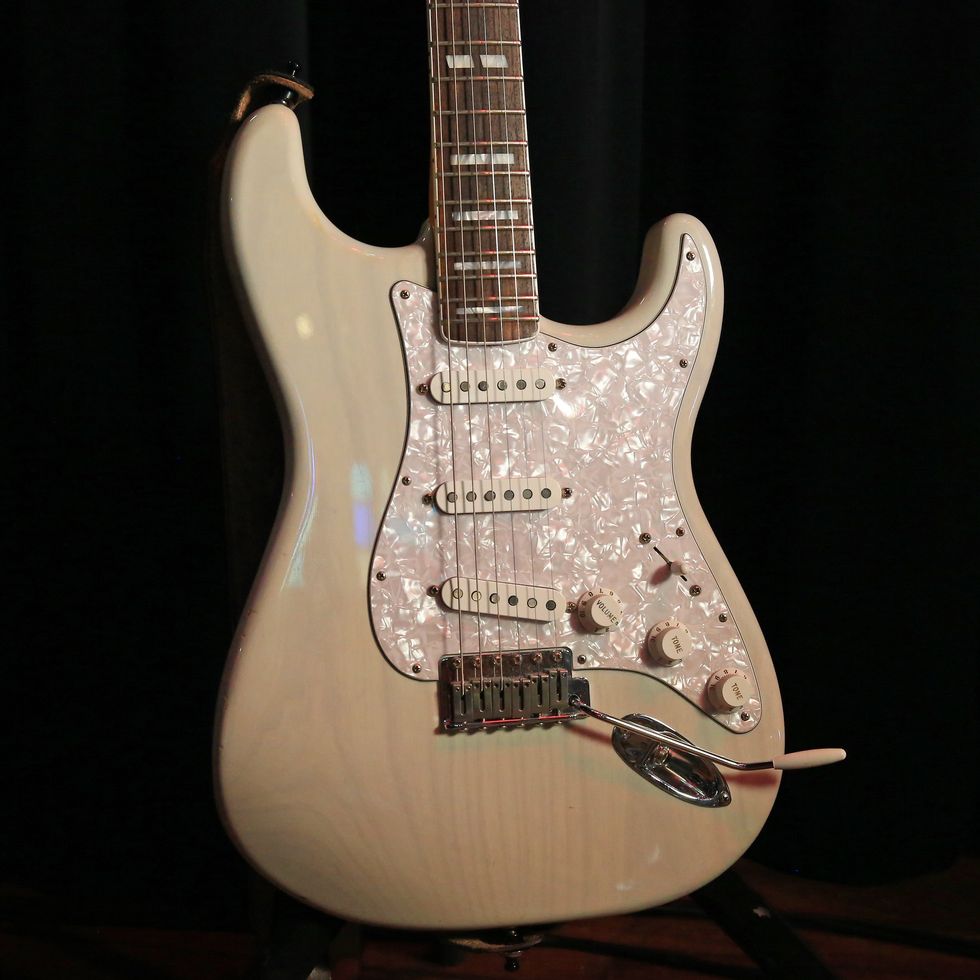
This new Kenny Wayne Shepherd Signature Stratocaster features a chambered ash body, a translucent faded sonic blue lacquer finish, an early ’60s inspired C-shaped maple neck, and a bound rosewood fretboard with a 7.25" radius and block inlay. The neck is “the ultimate copy of the neck on my ’61 Strat,” Shepherd says.
Blue Moves
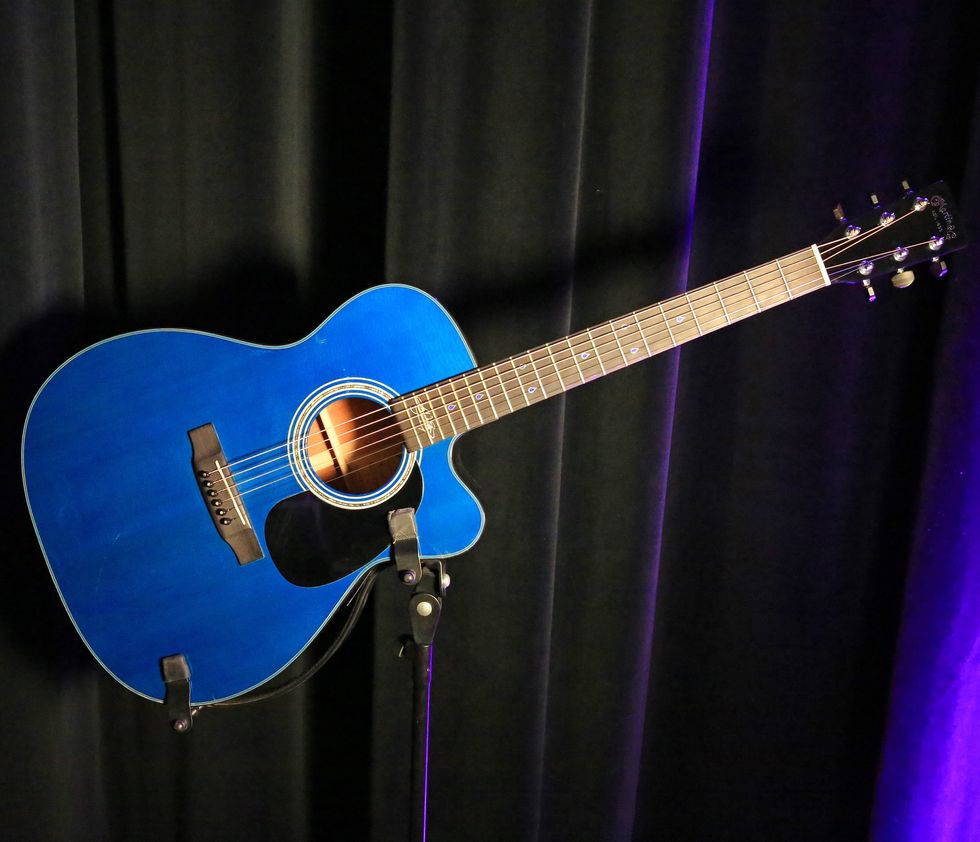
Here’s Shepherd’s Martin acoustic signature model JC-16KWS. It’s got a maple back and sides, a Sitka spruce top, Martin’s A-frame X scalloped bracing, and a mahogany neck with a low oval profile.
Billy Gibbons Wants This Guitar
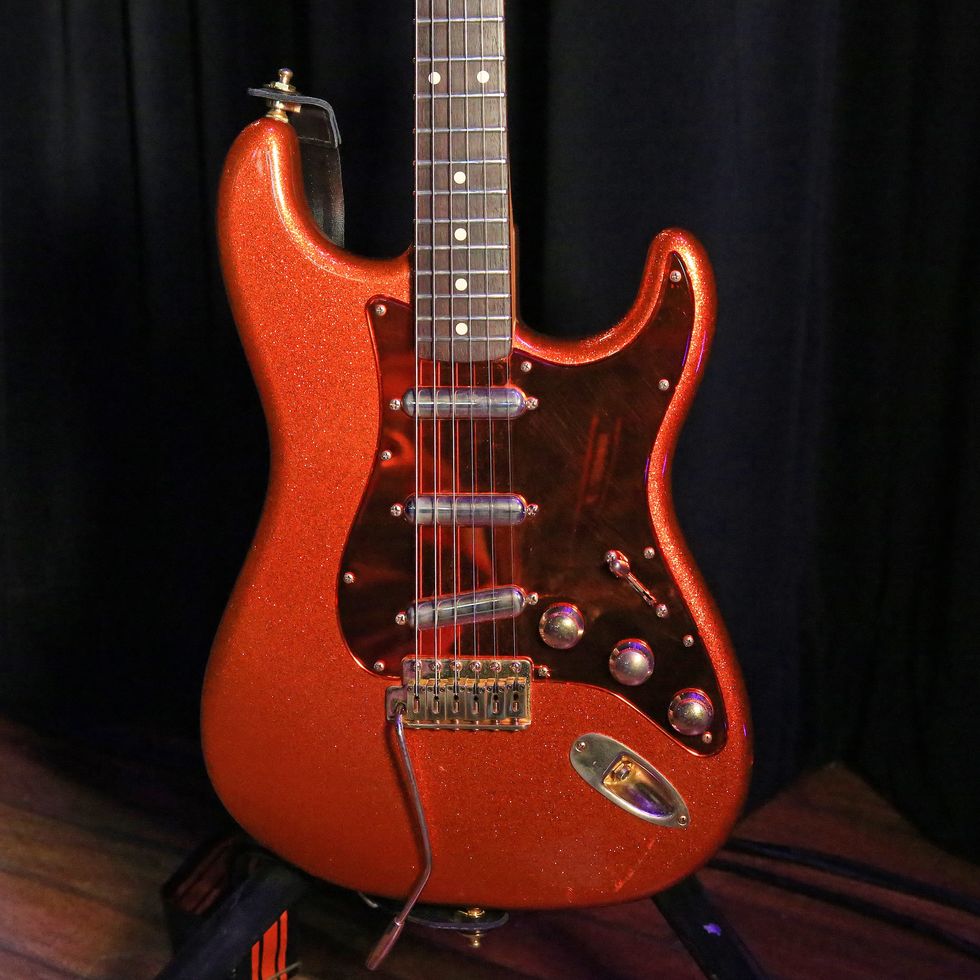
The good Rev. Gibbons’ eyes popped out when Shepherd unveiled this one on an earlier Ryman gig, and BFG named it “Copperboy.” It’s another Fender Custom Shop Masterbuilt Stratocaster by Todd Krause, with lipstick pickup covers and a reverse position for the bridge pickup.
Old Tones, New Tools
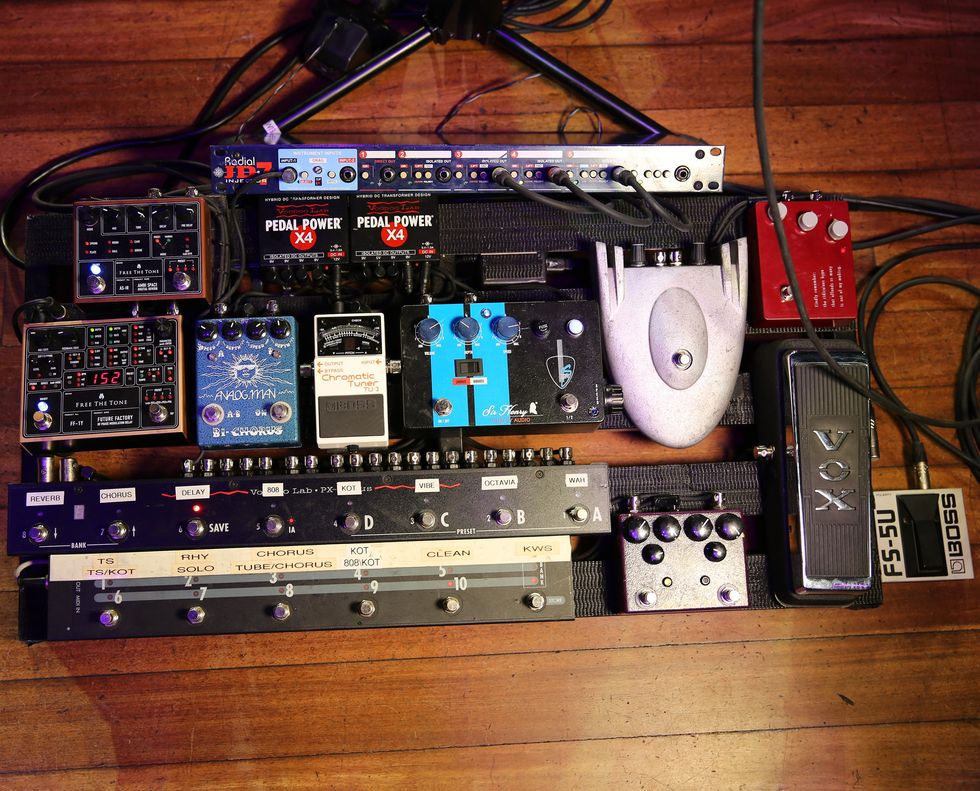
Except for that genuine Roger Mayer Octavia, KWS gets his blues-rock tones using some contemporary tools. There’s a modded Venus Witch Wah by Steve Monk, a Sir Henry Vibe by Tinsley Audio, a Boss TU-3, an Analog Man King of Tone and Bi-Chorus, a gen II Klon KTR, and a Free The Tone Future Factory and Ambi Space Digital Reverb. All pedals are routed through a Voodoo Labs PX-8 Plus programable switcher. A Radial JD7 routes the signal to his three amps, and two Voodoo Lab Pedal Power X4s supply the juice.
Rumbles with Dumbles
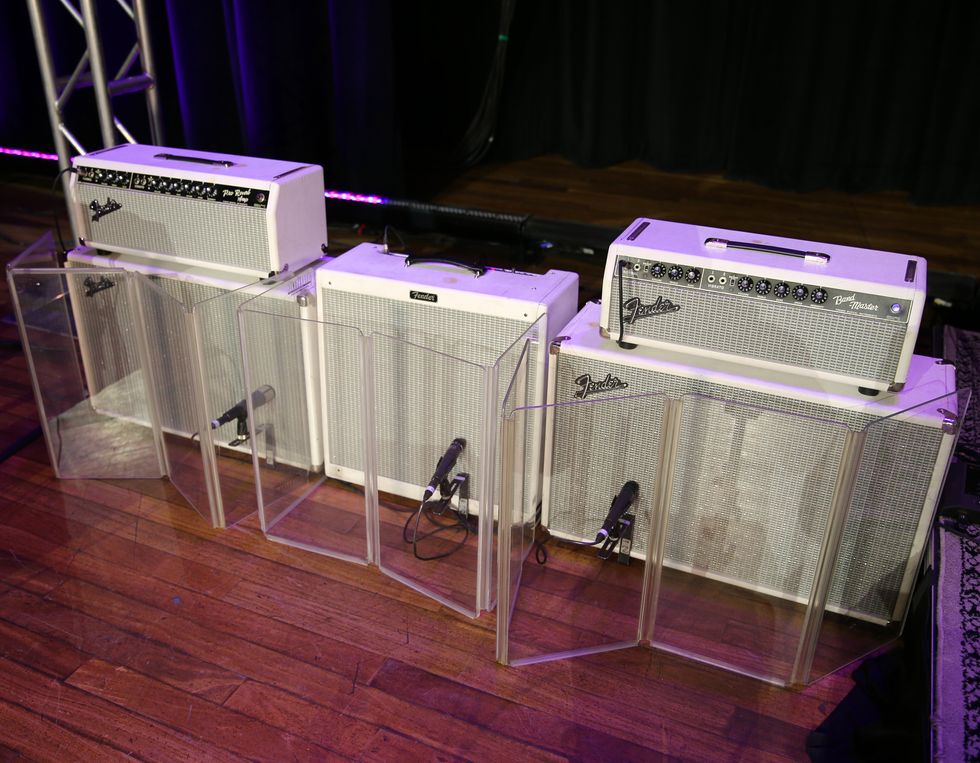
For this tour, Shepherd uses a trio of white Fender amps and cabs hot-rodded by the late Alexander “Howard” Dumble—just a few of the 11 Dumbles in his collection. These are a Pro Reverb (called the Ultra/Rockphonix), a Bassman (called the Slidewinder), and a Band Master (called the AC763).
Dialing in Dumbles
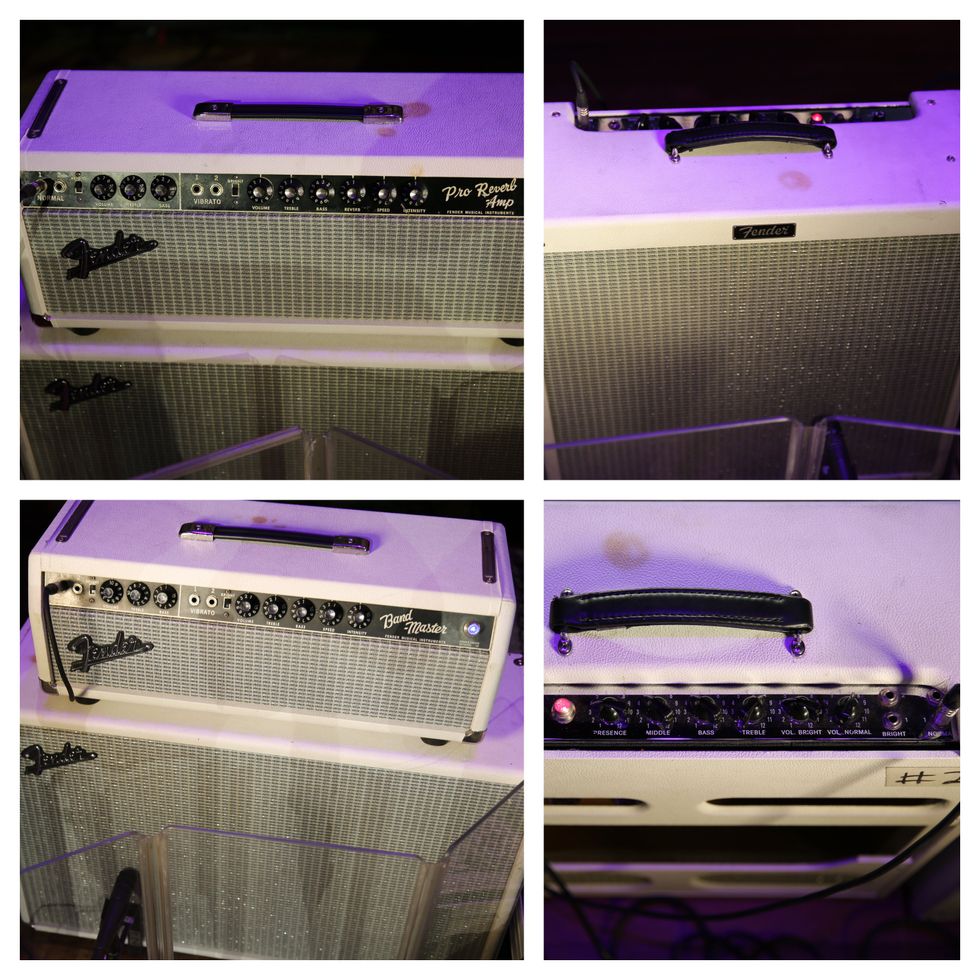
Here are close-ups of the settings Shepherd applies to his three Dumble-built amps.
![Rig Rundown: Kenny Wayne Shepherd [2023]](https://www.premierguitar.com/media-library/rig-rundown-kenny-wayne-shepherd-2023.jpg?id=33113856&width=1200&height=675)


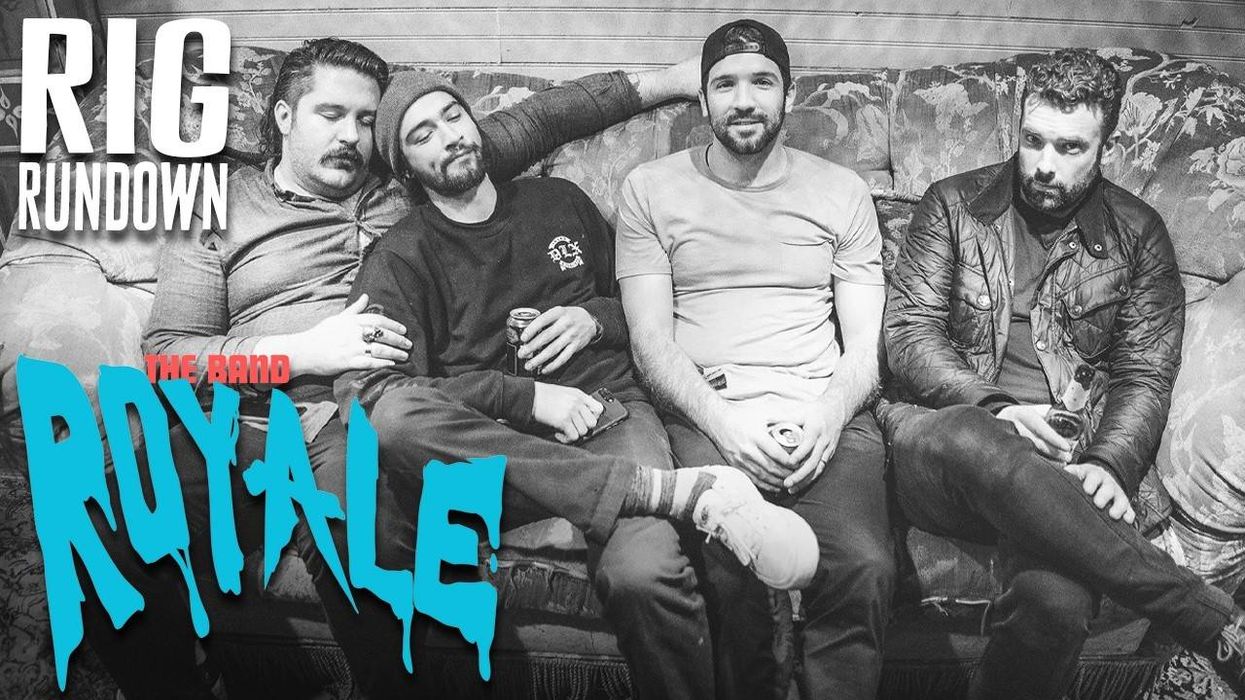
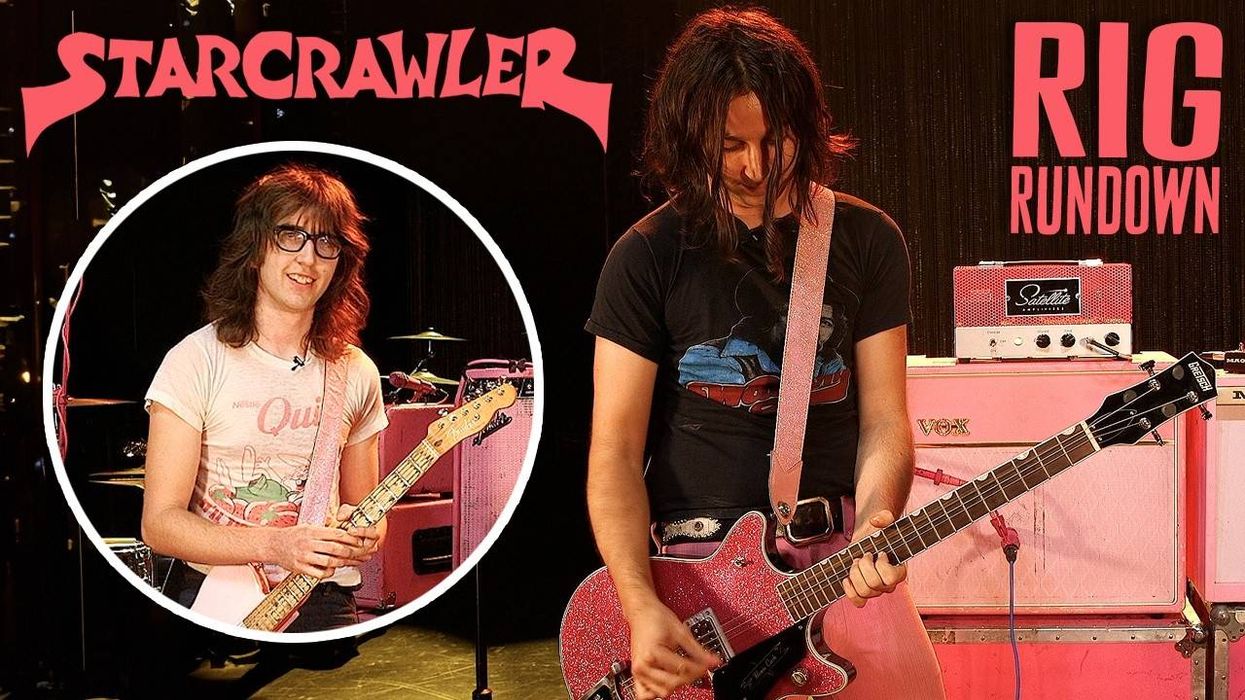
![Devon Eisenbarger [Katy Perry] Rig Rundown](https://www.premierguitar.com/media-library/youtube.jpg?id=61774583&width=1245&height=700&quality=70&coordinates=0%2C0%2C0%2C0)
